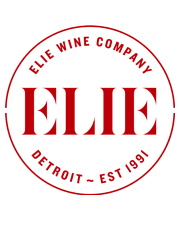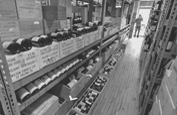Sparklers to Ring In the New Year and Complement a Wide Variety of Foods + Out With The Old: Six 2012s Pommard Cuvées Unfurl with a Decade of Age
Heralding the new while paying homage to the old; that’s not only the theme song of New Year’s Eve, but for the greater wine world. Each year brings the excitement of a fresh growing season while the gems in our cellars nudge closer to maturity.
This week, we mark the new year with some of the top producers of a style most associated with celebration; sparkling wines from a variety of winemakers in Spain and France. At the same time, we are offering a carefully-curated and meticulously stored selection of Pommard—the big-shouldered Burgundy—which have now seen a decade under cork and should be approaching their zenith.
There’s no reason not to spend your year end with both; each displays its own spectrum from the color pallette we glorify collectively as wine.
Champagne, Crémant and Spanish Sparkling Wines
As always, the sparkle in our hearts at the end of the year is enkindled by our valued customers and our wonderful producers. To be the liaison between the two is an honor beyond measure, and as the local face of so many extraordinary winemakers, we’d like to close out the season with a holiday shout-out to some of the top names in Champagne, Crémant and Cava that grace our shelves and keep our spirits bright. All have excelled in the quest for terroir expression by rigorous work in the vineyards, picking fruit at its peak and employing minimal intervention in the cellar.
In Champagne, Aurélien Laherte of Champagne Laherte Frères hails from a proud heritage of innovation in Chavot, a region on the southern side of the valley formed by the stream Le Cubry; Champagne Marguet, a bellwether for innovation since 1883, continues the tradition with current winemaker Benoît Marguet, highlighting the distinction of each parcels he farms in Ambonnay; Champagne Penet-Chardonnet in the Grand Cru village of Verzy, where Alexandre Penet is known for his single-vineyard Champagnes drawn exclusively from his family’s historical lieux-dits; and in the rising star of Aube’s Côte des Bar, Champagne Fleury, where Jean-Sébastien Fleury’s Courteron vineyards span 38 acres on a clay-limestone hillside along a tributary of the Seine. And many more, 250+ Champagnes.
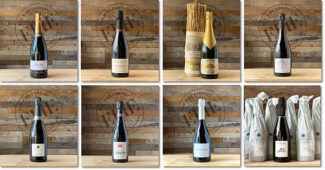
And throughout the rest of France, producing sparkling wines using Méthode Champenoise, Sophie et Gautier Guillemot-Michel and a 42-acre estate in the Quintaine, adjacent to the village of Clessé in the south of Burgundy; Domaine Overnoy-Crinquand, where Mickael Crinquand farms 13 acres in the prized hills of Pupillin in the Jura; Romaric Chavy of Domaine Chavy-Chouet, with vineyards spread across the Côte de Beaune communes of Puligny-Montrachet, Meursault, Saint-Aubin, Volnay and Pommard; and the two-hundred-year old Domaine Gouffier in the village of Fontaines in Mercurey, where Frédéric Gueugneau produces a marvelous 100% Chardonnay Crémant.

In Spain, Uva de Vida is a small, biodynamic farm in the Santa Olalla region of Toledo run by Maria Carmen López Delgado; Can Sumoi, the thousand acre collaboration between Pepe Raventós and childhood friend Francesc Escala in the Serra de l’Home range in the Penedès; also Penedès-based is Masia Can Tutusaus whose winemaker Raimon Badell never fails to impress; and from the new DO, Conca del Riu Anoia, Raventós i Blanc defends the great terroir in one of the oldest winegrowing valleys in the world.
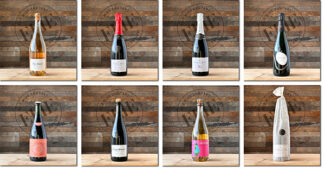
Pairing Sparkling Wine With Food
Science Proves The Match: The Fifth Taste is The Key
When the Comité Champagne asked Professor Barry Smith of the University of London to shed some light on the food pairing possibilities of Champagne, he had a field day. He’s a rare breed: An academic, a philosopher and a scientist who studies wine in an interdisciplinary fashion. To get to the root of the question, he asks one of his own: “Are the traditional matches (oysters, seafood, etc.) simply a matter of culture, or is there a biological explanation? Does it have more to do with the molecules found in flavor compounds?”
Shunning the simplistic response, he believes that the synergy between certain foods and Champagne is the result of the elusive fifth taste, umami. Smith says: “This is what has governed our favorite food pairings for centuries—ham and cheese, bacon and eggs; all these are classic examples of synergistic umami.”
Smith then refers to his colleague Ole Mouritsen, a gastro-physicist at the University of Copenhagen, fellow expert on umami and in fact the man behind some of Noma restaurant’s flavor combinations. Mouritsen is the person who discovered the umami-richness of lees-aged sake – and this is what prompted Smith to make the connection to Champagne: “Many of us will know that Champagne goes extremely well with Parmesan: these combinations of Champagne with umami-rich foods have always worked spectacularly well,” Smith notes.
Expounding further, he claims that foods high in acid and sweetness disappear relatively quickly on the palate, but umami lingers. Sipping Champagne with its own umami richness boosts the awareness of glutamate in the Champagne, and, “that is when you get the lovely richness and depth of flavor.”
“This opens lots of opportunity, because there are lots of foods out there with nucleotides and glutamates in them—think of sushi-grade tuna or even cooked tuna, scallops, and obviously, oysters. But the Champagne’s tsunami of umami works just as well over, say, brunch: Eggs Benedict served with ham, for instance. Combinations like beef carpaccio with Parmesan are matches made in heaven for Champagne, as is anything with cooked or sundried tomato, cooked seafood platters with mayonnaise, grilled radicchio and anchovy, aged cheeses and any other high umami foods.”
Out With The Old:
2012s Pommard Unfurl With a Decade of Age
Acquired taste or not, old Pinot Noir is often seen as the pinnacle of the wine-collective universe, even more than old Bordeaux. Of the most expensive wines ever sold, Burgundy represents two of the top three while Château Lafite’s incredibly rare 1869 offering does not show up until #5.
In part this is based on the wine collector’s snake devouring its own tail, but it is undeniable that—even more than Bordeaux—Burgundy is a moveable feast. Pinot Noir is a thin-skinned, delicate grape; in its youth, it rarely reflects the majesty it acquires with a few years in the bottle, and among the greatest of them, this subtle alchemy does not turn to pure gold until about a decade.
The biggest risk of older vintages, even the finest examples from the best domains, is storage. Because of its delicate structure, Burgundy is generally more susceptible to atmospheric stresses than heavier alternatives. The 2012s offered here, reaching their apex, have a well-known provenance and our guarantee is not only on solid footing, it is much easier to state than the hauntingly elusive nuances in beautifully-aged Burgundy.
Vintage 2012
As so often happens in Burgundy, 2012 snatched victory from the jaws of defeat. The combination of a cold and wet spring led to a difficult flowering, and the insult to injury was a catastrophic hailstorm on June 6. From that point, mildew became an issue, and estates that did not treat for the numerous outbreaks tended to see their yields devastated. It was not until late August that the weather finally decided to cooperate, and ripening was speedy because the crop level was so low. The harvest began in late September, and top estates took particular care in sorting to remove damaged or dehydrated bunches.
According to Domaine Parent’s Anne Parent, 2012 was tough: “We lost 55% of our crop, but others had it worse. Pommard’s climat Noizons was a complete write-off. We had to cut some bunches and leaves after the hail but the practically perfect weather in August/September provided sun, a drying wind and not too much, heat, so that grapes were brought in looking great; triage was less than 5% at harvest time.”
The hail did some wood damage to the vines, and Parent adds, “We normally prune ‘Cordon-Royat’ but have had to go back to ‘Guyot’ because of the damage to wooden parts of the vine. We will go back once the wood is replenished.”
Pommard: Pinot Noir Brut
If Burgundy is a volume of poetry, Pommard might be thought of as its Alfred, Lord Tennyson, offering power and rich structure, a Charge of the Light Brigade, only with a substantially safer outcome. Pommard is the beginning of serious Pinot Noir in Burgundy; nothing else is grown and nothing else allowed besides (perhaps inexplicably) a few vineyards of the Lemberger/ Sankt-Laurent cross ‘André.’ Aptly named for Pomona, the Roman god of fruit trees, Pommard’s most muscular wines hail from its mid-slope Premier Cru vineyards which run in a nearly uninterrupted from the commune boundaries of Beaune in the north to Volnay in the south. Even that may belie the quality of these wines; most experts believe that the Les Epenotes and Les Rugiens Premier Crus should be promoted to join Corton in its Grand Cru status. Once in line for this prestigious upgrade, the vignerons of the time were wary of the restrictive Grand Cru production laws and declined the offer.
To appreciate what happens to Pommard as it ages requires the soul of an artist; to understand why requires a little applied science. Like the description or not, wine is a complex chemical soup, and the various compounds—acids, sugars, alcohols, esters, tannins and phenolics—interact with each other from the moment the bottle is sealed. As the theory goes, grapes evolved aromatics on the vine to entice pollinating insects, and these primary aromas undergo chemical reactions with time and flavors like leather, earth, and nuts evolve, giving a properly aged wine its profundity.
In the case of Pommard, the forward and often dense tannins soften with polymerization and tertiary characters develop as the fruit fades and becomes more dried in character. Floral, earthy and undergrowth notes emerge; leather and chocolate and frequent tasting notes. Pinot Noirs from less hallowed origins may display exaggerated oak and alcohol as the fruit fades, and any flaws in the process will be exaggerated, but a well-made, well-kept Pommard from 2012 will display an optimal combination of fruit flavors, fermentation flavors and aging flavors.

For centuries Pommard has been considered the benchmark of red Burgundy; the gold standard to which others aspire. As in all things wine, this is the result of geography and geology united. The best vineyards are mid-slope, at elevations between 820 and 1100 feet; the lower ground is made of ancient alluvium. Mid-slope, the clay-limestone soils are well drained thanks to the inclusion of rock debris, and higher still are Jurassic (Oxfordian) marls, brown calcic soils, and brown limestone soils. In places, the soil is reddened by the presence of iron. Best exposures are typically south or east.
Domaine Claudie Jobard
Established in 2006 in Demigny (Saône-et-Loire), Claudie Jobard brought with her an impeccable pedigree. Her mother, Laurence Jobard, was the winemaker for Joseph Drouhin for over twenty years and is recognized as one of the best oenologists in France; her father, Roger, was a pépiniériste viticole descended from generations of experts in vine production. Her 24 acres are predominately in Rully—her Pommard property was inherited from her grandfather, and she manages the property with her sister Mireille Desmonet.
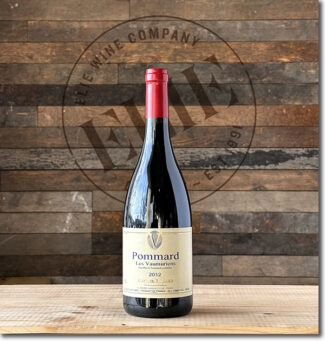 Domaine Claudie Jobard ‘Gabriel Billard’, 2012 Pommard ‘Les Vaumuriens’ ($65)
Domaine Claudie Jobard ‘Gabriel Billard’, 2012 Pommard ‘Les Vaumuriens’ ($65)
‘Les Vaumuriens’ is a 44-acre Village-level lieu-dit just northwest of the main village of Pommard. Jobard’s acre boasts sixty-year-old vines; Gabriel Billard was Claudie’s grandfather, from whom she inherited the land. The wine has evolved beautifully with layers of subtle fruit aromas finishing with a touch of earth, saddle-leather and light coffee notes.
Domaine Bernard & Thierry Glantenay
With roots in the 16th century, Domaine Bernard & Thierry Glantenay is a family story with 500 years of history. Up until around fifteen years ago, the estate sold its grapes to négociants, but that changed with Thierry taking the reins from his father, and today, the full production is sold as domain bottlings. Having trained as engineer, Thierry brings a meticulous attention to detail to his winemaking, using no more than 25% new oak for even his top wines in search of terroir expression; His lieu-dit wines are considered among the best in the region, with vines between 60 and 80 years old, values amid today’s stratospheric Burgundy price tags.
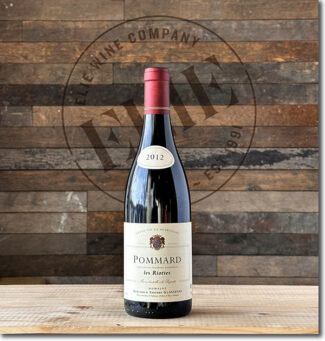 Domaine Bernard & Thierry Glantenay, 2012 Pommard ‘Les Riottes’ ($120)
Domaine Bernard & Thierry Glantenay, 2012 Pommard ‘Les Riottes’ ($120)
The name ‘Les Riottes’ stems from ‘petite rue’, or ‘little street’ in Old French. Situated besides the vines of the Château de Pommard, it is noted for the quality of its clay soils. Manually harvested with meticulous selection, the grapes underwent traditional vinification on indigenous years, then aged in 20% new oak for 14 months. The sappy acids and powdery tannins have melded into rich earth tones for a perfectly aged Pommard.
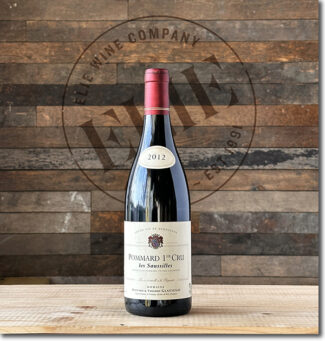 Domaine Bernard & Thierry Glantenay, 2012 Pommard Premier Cru Les Saussilles ($160)
Domaine Bernard & Thierry Glantenay, 2012 Pommard Premier Cru Les Saussilles ($160)
The ten-acre Les Saussilles lieu-dit, sometimes written as ‘Saucilles’ is a Premier Cru climat located in the northwest of the Pommard commune on the border with Beaune. It’s a hallmark of Glantenay’s portfolio, from eighty-year-old vines. The wine shows a soft salinity that is characteristic of Saussilles, along with deep brambly berry fruit and tertiary hints of truffle and chocolate.
Domaine Parent
Not much more need be said about the gravitas of this estate than the fact that Etienne Parent sold wine to Thomas Jefferson in 1787. Today, Domaine Parent is managed by two sisters, Anne Parent and Catherine Fages-Parent, representing the 12th generation of vigneron to work these rich lands. Anne Parent scoffs at the notion of bad vintages, believing that instead, there may be bad winemakers—this may, in fact, be her training as a lawyer speaking. The domain was the first in Pommard to analyze the grapes and the soil in order to pursue more environmentally-friendly winemaking and these wines are made organically, although that designation does not appear on the label.
 Domaine Parent, 2012 Pommard Premier Cru Les Argillières ($130)
Domaine Parent, 2012 Pommard Premier Cru Les Argillières ($130)
L’argile is French for ‘clay’, which should be a hint as to the terroir of this lauded climat, and as a result of the clay-rich soils, wine from Les Argillières’ ten acres are powerful and rich, with a rustic element which marks them out as definitive of the Pommard style.
 Domaine Parent, 2012 Pommard Premier Cru Les Chaponnières ($140)
Domaine Parent, 2012 Pommard Premier Cru Les Chaponnières ($140)
A wonderful seven-acre Premier Cru vineyard located just behind the Parent home in Pommard below the well-regarded Rugiens-Bas climat and above Les Croix Noires; only three growers have access. Parent only produced 350 cases. It is powerful with voluptuous scale and structure showing spicy black cherry and autumn leaves on the nose, a velvety cloak of tannins and a long, mineral finish.
Domaine Fernand & Laurent Pillot
A domain that casts a wide net, with 35 acres cultivated in 22 appellations including Chassagne-Montrachet, Pommard terroirs along with Santenay, Saint-Aubin, Puligny-Montrachet, Meursault, Volnay and Beaune. The father-and-son team of Fernand and Laurent focuses on low yields and minimal use of fertilizer. The vineyards are worked ‘agrobiologie’ with an emphasis on natural weed control; the family belongs to the research group DEPHY-EcoPhyto since 2012, which aims to decrease the amount of pesticides used and to better agricultural techniques for an environmentally sound ecosystem.
 Domaine Fernand & Laurent Pillot, 2012 Pommard Premier Cru Rugiens ($120)
Domaine Fernand & Laurent Pillot, 2012 Pommard Premier Cru Rugiens ($120)
Les Rugiens consists of two parcels, Les Rugiens Haut and Les Rugiens Bas, making reference to on their positions at the summit of the Pommard slope—this wine comes from a blend of the two. ‘Rugiens’ comes from the French word rouge, referring to the reddish soil in the vineyard, a result of high iron content. The wine was allowed a few days of cold maceration prior to fermentation, then aged for 18 months in French oak barrels, 80% new. It is virile, with concentrated cherry and raspberry tones that have matured to pepper, licorice and eucalyptus.
- - -
Posted on 2022.12.31 in Pommard, Crémant du Bourgogne, France, Burgundy, Champagne, Wine-Aid Packages | Read more...
Tour de France in Wines: A Selection of 8 Three-Bottle Gift Sets + A Gift That Keeps on Giving: ‘The Champagne Society’ Membership 6-Month ($279) or 12-Month ($499) Subscription
This holiday season, Elie’s proud to offer several gift packages intended to showcase the marvelous styles and innovations that are occurring throughout the major growing areas of France. These packages have been curated with a nod toward typicity and quality, and each one will include a printed information sheet describing the domains, the winemakers and the grape varieties that make up the wines. These represent selections from some of our favorite winemakers and will take your gifting prowess to a new level! All bottles are, of course, available individually as well.
In addition, we are offering an opportunity to gift a Membership to ‘The Champagne Society’ to your effervescent friends: 6 Months ($279) or 12 Months ($499) + Pick 3 Bottles from (Standout Dozen of the Year) List for Pre- Packaged Box.
Gift a Membership Subscription to
‘THE CHAMPAGNE SOCIETY’
(A Bimonthly Club)
Lily Bollinger once said, “I only drink champagne when I’m happy and when I’m sad. Sometimes I drink it when I’m alone. When I have company, I consider it obligatory; I trifle with it if I’m not in a hurry and drink it when I am, otherwise I never touch the stuff unless I am thirsty.”
Not only is Champagne the quintessential drink of celebration, it has traditionally been a gift given with ramped-up sentiments. This year we are offering a couple of variations on this theme, beginning with an opportunity to gift a special someone a six-month or twelve-month membership to The Champagne Society . Our pick for December, Champagne Fleury , will be packaged in a wrap-ready gift box along with a congratulatory certificate explaining what lies ahead in bi-monthly installments:
Six-Month Membership Gift ($279) – Bimonthly
You will take home a pre-packaged, ready-for-gift-wrapping box containing The Champagne Society December Selection bottle, Champagne Fleury, with a certificate congratulating the recipient on their new membership to the Champagne Society, a select community of like-minded folks who appreciate the exceptional in life and recognize that wine is a superlative among man’s culinary creations. Then, in February and April, they are eligible to receive two more installments, one Champagne bottle each month (described in detail, in advance, by email), which they can stop by the store to pick up in person or have shipped directly to their home at no additional cost.
Twelve-Month Membership Gift ($499) – Bimonthly
A full year’s membership in the Champagne Society includes a pre-packaged, ready-for-wrapping gift box containing The Champagne Society December Selection bottle, Champagne Fleury, along with a congratulatory certificate informing the recipient that they are now part of the Champagne Society, whose members are eligible for discounted prices on highly allocated Champagne, many bought directly, and many available only through Elie Wine Company. Then, in February and April, June, August and October, they are eligible to receive five more installments, one bottle of Champagne each month (described in detail, in advance, by email), which they can stop by the store to pick up in person or have shipped directly to their home at no additional cost.
Provence: Captured Sunshine
The phrase ‘Mediterranean climate’ applies to no region more succinctly than to Provence, where the furthest vineyard from the Mediterranean is a mere 25 miles away and the vines enjoy 3000 sunshine hours per year along with an annual average temperature of 58°F. These long, dry summers provide ideal harvest conditions in most years, leaving the majority of the grape-growers free from worry about unwanted rot and vine disease. As a result, the use of pesticides and herbicides can be kept to a minimum and the wines are, without fanfare, organic.
Stretching 125 along the European coast and featuring a multitude of terroirs, Provence has surprisingly few sub-appellations. The largest is in the east, Côtes de Provence, which accounts for around 50,000 acres of vineyards. The west of Provence contains the region’s second-largest appellation, Côteaux d’Aix-en-Provence, which draws from about 10,000 acres.
While the popular stereotype of Provence wine is a Côtes de Provence rosé, it is the smaller, more peripheral appellations that make the region interesting to wine enthusiasts, where grape varieties are found that grow nowhere else. Besides the familiar trio made famous by nearby Rhône (Grenache, Syrah and Mourvèdre) and commercial powerhouses like Cabernet Sauvignon, pockets of indigenous and fascinating grapes remain, including Barbaroux, Calitor, Tibouren and Vermentino, each making distinct—and distinctively Provençal wines.
[$145] Provence Set
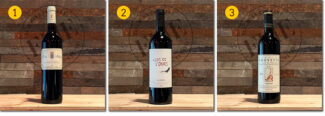
Domaine Roche Redonne (AOP Bandol)
Made up of eight wine-loving communes surrounding a cozy fishing village, Bandol breaks the Provençal mold by producing red wines that not only outstrip the region’s legendary rosé, but make up the majority of the appellation’s output. In part that’s due to the ability of Bandol vignerons to push Mourvèdre—generally treated as a blending grape in the Côtes du Rhône and Châteauneuf-du-Pape—to superlative new heights.
About an hour’s drive east from Marseille, the microclimate that sets Bandol apart from the rest of Provence is the result of altitude and a natural amphitheater; the vines are planted on steep hills where the soils are composed of limestone, red clay and silica sand and the vines are protected from the harshest winds by a geographic bowl formed in the low coastal mountain ranges between La Ciotat and Toulon. This combination of features make it ideal for ripening finicky, late-budding Mourvèdre, which might otherwise be challenged by the proximity of the Mediterranean.
Founded in 1979 by Henri and Geneviève Tournier, Roche Redonne is situated among the Bandol foothills surrounded by olive groves and garrigue scrub just outside the pretty village of La Cadière d’Azu. The 30-acre vineyard is farmed using organic methods and the vines (Mourvèdre, Cinsault and Grenache) now average more than 40 years old, with the youngest vines at 20 years and the oldest at 60. The yields are kept low, and in fitting with the appellation laws, the steeply hilly vineyards are harvested by hand.
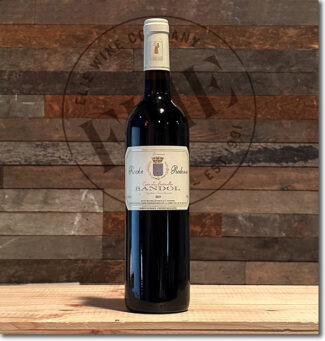 1. Domaine Roche Redonne ‘Cuvée Les Bartavelles’, 2019 Bandol ($69)
1. Domaine Roche Redonne ‘Cuvée Les Bartavelles’, 2019 Bandol ($69)
Made from 95% Mourvèdre and 5% Grenache, ‘Bartavelles’ means ‘Royal Partridges’, and there is certainly a noble delivery here: On the nose, lovely scents of ripe black fruit, licorice and sweet spice waft above a powerful, full-bodied palate with notes of blueberry, wild herbs and peppery spice.
Clos de l’Ours (AOP Côtes de Provence)
Côtes de Provence is the largest appellation in Provence, and although it is allowed to produce both red and white wines, it is the source for more than 80% of Provence’s rosé, made predominantly from Grenache, Syrah, Mourvèdre and Cinsault along with the quintessentially Provençal red grape Tibouren. The terroir is varied, ranging from the slightly cooler sub-alpine hills around Seillans in the north, to the coastal vines around the Golfe de Saint-Tropez in the east and the Baie de la Ciotat, between Bandol and Cassis in the west.
L’Ours translates to ‘bear’—the Brotons family identity and an affectionate nickname for their patriarch, Michel. In 2008, Michel and his wife Fabienne sold the family jewelry business in Marseille to pursue a winemaking dream in Provence, finding a 32-acre estate in a northern corner of Côtes de Provence planted to old vine Rolle, Clairette and Ugni Blanc, used for their white wine portfolio and Syrah, Grenache, Mourvèdre, Cinsault and Carignan for their red and rosés.
 2. Clos de l’Ours ‘Le Chemin’, 2019 Côtes de Provence ($36)
2. Clos de l’Ours ‘Le Chemin’, 2019 Côtes de Provence ($36)
A blend of 37% Grenache, 34% Mourvèdre and 29% Syrah made with a minimum of intervention, wild yeast and no filtration. The wine shows dried raspberry and cassis behind firm acidity and integrated tannins.
Domaine Hauvette (AOP Les Baux de Provence)
Commonly known simply as ‘Baux’, this small appellation is located in the Alpilles Mountains atop a rocky outcrop overlooking the broad plains to the south. Its name refers to the site: In the Provençal language, ‘bauç’ is a rocky spur, and from the commune’s name, the word ‘bauxite’ was coined for aluminum ore discovered there. Wedge between the Rhône delta to the south and Avignon to the north, the wines of Les Baux de Provence are as much Rhône Valley in style as Provence. By law, two of three primary Rhône varieties (Grenache, Syrah and Mourvèdre) must be included and make up at least 60% of the final blend, with Cinsault replacing Mourvèdre in the rosé wines. But traditional Provençal varieties Carignan and Counoise may constitute up to 30% of the wines and Cabernet Sauvignon, brought to Provence from Bordeaux in the 1960s, is also allowed in small quantities.
Domaine Hauvette is very much a part of the picturesque Provençal landscape that inspired Van Gogh’s ‘Starry Nights’, where the Mistral blows for half the year and garrigue is omnipresent. In 1980s Dominique Hauvette left her job as a lawyer in the Savoie and re-discovered her passion for raising horses amid a sunnier climate. She began studying oenology, with an emphasis on making natural wine, and today oversees 42 acres of clay limestone terroir.
 3. Domaine Hauvette ‘Cornaline’, 2012 Les Baux de Provence ($40)
3. Domaine Hauvette ‘Cornaline’, 2012 Les Baux de Provence ($40)
50% Grenache, 30% Syrah and 20% Cabernet Sauvignon farmed biodynamically in cretaceous limestone from the favored lieu-dit ‘Béton.’ The Grenache spearheads the fruit and texture while the Cabernet brings herbal notes and completes the spicy tannic structure of the Syrah.
Southern Rhône: Grenache Takes Center Stage
Although Châteauneuf-du-Pape remains her heart and soul, Southern Rhône slithers across a vast, fertile territory, producing 95% of Rhône Valley’s total wine output. It follows a vinous path beginning in the commune of Montélimar, about 30 miles south of Valence, and extends to the medieval city of Avignon, once the seat of the Catholic popes.
The climate here is considerably warmer than it is along the Rhone’s northern banks, and the favored grape varieties are those that thrive best through hot and humid summers. Unlike its northerly neighbor, which relies heavily (and at times entirely) on Syrah, wines from the south are generally blends based on a balance of viniculture’s Holy Trinity—Grenache, Syrah and Mourvèdre—along with a legion of other grapes. These wines often represent tremendous value as well as a diverse tasting experience comfortably described as ‘sunny’ because of the bright fruit and warm herb notes expressed.
[$104] Southern Rhone Crus Set

Domaine Les Pallières (AOP Gigondas)
Thanks in the main to the region’s Mediterranean climate and red clay-alluvial soils, the wines of Gigondas are Grenache-based; 50% Grenache is required by law, with Mourvèdre and/or Syrah accounting for the remaining blend, adding structure and savoriness to the richness of Grenache. Under the AOP regulations, only red and rosé wines may be produced in Gigondas; white wines are simply declassified as Côtes-du-Rhône. Once considered of a diminutive version of the majestic Châteauneuf-du-Pape, Gigondas’ Grenache is often grown at higher elevations in terraced vineyards and, in recent years especially, offers an amazing value.
Found just outside the village of Gigondas, within the foothills of the beautiful and brooding Dentelles de Montmirail, the estate had been a continuously running farm within the same family since the fifteenth century until 1998, when it was sold to Daniel and Frédéric Brunier of famed Old Telegraph.
As in CdP, the Brunier brothers focus on the terroir of the vineyards, which lie at altitudes between 800 and 1300 feet with varying proportions of sand and clay woven through the limestone scree. Terraces were built and reinforced to allow better water retention and the many lieu-dits, once blended into one cuvée of Gigondas, have been separated into two in an effort to best express two remarkable personalities. Cuvée ‘Terrasse du Diable’ encompasses the low-yielding vines from the higher altitudes while Cuvée “Les Racines” showcases the vineyard parcels surrounding the winery—the origin of the estate with the oldest vines—with the emphasis on freshness and extravagant fruit.
 1. Domaine Les Pallières ‘Terrasse du Diable’, 2018 Gigondas ($42)
1. Domaine Les Pallières ‘Terrasse du Diable’, 2018 Gigondas ($42)
A high-altitude cuvée where Grenache makes up 85% with Mourvèdre taking care of the remainder. Yields are about half what the estate generally permits and the vines, over fifty years old, are terraced against the imposing limestone cliffs of Les Dentelles de Montmirail. The wine is garrigue-focused, showing black olive. licorice, mint, eucalyptus and rosemary.
Domaine de la Mordorée (AOP Lirac)
To say that the wines of Lirac are lyrical is not just a pun; the noted combination of elegant perfume and savory grace softens the might. Lirac’s reds are similar in style to the softest of the Côtes du Rhône Villages but miles ahead in complexity: 85% of Lirac production is red, with rosés accounting for 5% and whites the remaining 10%.
Lirac’s two thousand acres are directly across the Rhône from Châteauneuf-du-Pape, and the appellation shares the same iconic rolled pebbles scattered throughout the sandy limestone soils. Vineyards on Lirac’s upper terraces are generally made up of red clay and the large pebbles are here known as ‘terrasses villafranchiennes’; the soil of the lower vineyards shows more loess and clay-limestone. All elevations are prone to summer drought and, under certain strictures, irrigation is allowed.
“The terroir of Lirac is often hidden in the shadows of Châteauneuf-du-Pape,” says Laure Poisson of Les Vignerons de Tavel & Lirac. “But in recent years, Lirac has emerged from the shadows to become something different, something unique.”
GSM represents the Big Three in Southern Rhône, but at Domaine de la Mordorée, the most significant trio is Christophe and Fabrice Delorme along with their father Francis. In 1986, they purchased an estate in Tavel with the intention of producing world-class wine while remaining true to an ecologically-sound stewardship of their land. The success of the venture may be measured by the glowing praise heaped upon them by Robert Parker Jr. in 2007: “With 135 acres spread throughout some of the most impressive appellations of the southern Rhône, Christophe Delorme and his brother have produced one exquisite wine after another. Of course, the top cuvées of Châteauneuf-du-Pape are rare and expensive, but this is a place to find terrific Côtes du Rhônes and Liracs as well. Delorme is equally adept at dry whites as well as reds, and turns out some stunning rosés both under the Côtes du Rhône and Tavel appellations.”
With the untimely passing of Christophe in 2015, his daughter Ambre has stepped in; also invaluable to the current team is winemaker Rémy Chauvet, who worked as Christophe’s cellar manager. The 135 acres mentioned by Parker Jr. cover 38 parcels in Tavel, Châteauneuf-du-Pape, Lirac, Côtes-du-Rhône and Condrieu; the variety of terroirs thus explored make trellising a vital consideration. Says Fabrice, “Goblet training is used for older, un-trellised vineyards, with the canopy remaining free, a traditional pruning method provides better resistance to wind and drought and lesser sensitivity to trunk diseases. Cordon de Royat training is used for newer, trellised vineyards. The newer method allows for higher vines, leaving a larger leaf surface exposed to the sun, which yield colorful grapes that are richer in tannins and in sugar.
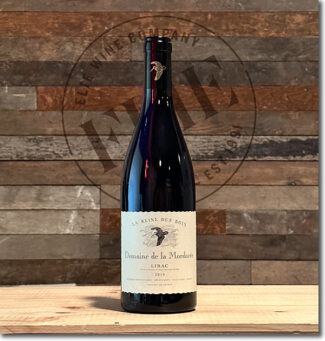 2. Domaine de la Mordorée, 2019 Lirac ($34)
2. Domaine de la Mordorée, 2019 Lirac ($34)
Half Grenache and half Syrah from a fifty-acre plot of forty-year-old vines grown in pebbles rolled over red clay. Fittingly, the wine shows aromas of red fruits and flowers; the palate is full, rich, ample and nicely concentrated.
Domaine La Garrigue (AOP Vacqueyras)
Adjacent to Gigondas, nestling at the foot of the Dentelles de Montmirail and extending beyond the commune of Vacqueyras to Sarrians, Cru Vacqueyras was once known for the rustic quality of its wine. In recent years, however, producers have sought—and obtained—elegance to offset the brambles. The vineyards of Vacqueyras are generally found at lower elevations where it is warmer than their neighbors’ hillside sites. Many of the vines are planted in the Garrigues, or flatlands, which are covered with pebbles, although there are a few higher-elevation vines found on the region’s sandy slopes and stony terraces. Compared to Gigondas, Vacqueyras has always been a more user-friendly wine, offering more fruit, warmth and spice.
In the world of wine, longevity is the consumption devoutly to be desired; it means staying power, both on the palate and in the field. Domaine La Garrigue was founded in 1850 by the same family that runs the property today. Brothers Maxime and Pierre Bernard are at the helm, with wives, children, nieces and nephews all at work, and there is plenty to be done: At over two hundred acres, it is the largest domain in Vacqueyras. There are three terroirs in Vacqueyras, and La Garrigue has plots in each of them, aware of what each brings to the party. Red-clay-under-galets plateau of La Garrigue (not coincidentally, where Domaine la Garrigue is located) offers power and depth, the sandy soils around the village of Vacqueyras bring finesse and the rocky limestone slopes at the foot of the Dentelles de Montmirail mean structure.
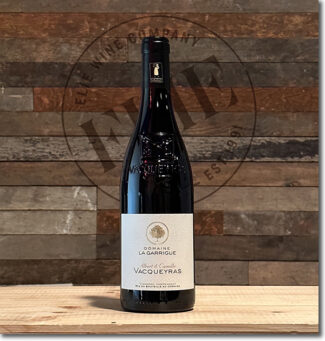 3. Domaine La Garrigue ‘Albert & Camille’, 2019 Vacqueyras ($28)
3. Domaine La Garrigue ‘Albert & Camille’, 2019 Vacqueyras ($28)
75% Grenache, 10% Syrah, 10% Mourvèdre and 5% Cinsault grown on clay-limestone and sand on an ancient river terrace. La Garrigue’s flagship wine is a quintessential and charming Vacqueyras loaded with brandied cherry, Damson plum and mulberry above complex undertones of leather, pepper and spice.
[$180] Chateauneuf-du-Pape Set
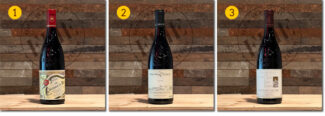
The best—and by most accounts, the most reliable—of the many Côtes du Rhône labels is the insignia-embossed Châteauneuf-du-Pape, which hails from a remarkable region between the towns of Orange and Avignon. Named for the castle built by the 14th Century Pope John XXII, this heavily-extracted wine is the template after which most Côtes du Rhône reds model themselves, and in fact, it’s the copycats that persuaded the producers of genuine Châteauneuf-du-Pape producers to apply to the French government to protect their name, making it the first AOC in France. The unique combination of precipitation (Châteauneuf-du-Pape is very dry) and wind (the powerful Mistral blows in from the Gulf of Lion in the northern Mediterranean) and especially, the large,
As a result, Châteauneuf-du-Pape is largely built around this grape, typically grown on low bush vines. Syrah adds black-fruit spice, and is grown on cooler higher ground; Mourvèdre brings flesh and acidity, and makes up about 10% of a typical blend. To a decreasing extent, Cinsault is used for aromatics; a total of 13 varietals are permitted, giving the wine a legendary and almost unrivaled complexity. Big-shouldered, occasionally blustery, Châteauneuf-du-Pape wine may, in ideal vintages, be as enjoyable to drink in its youth as it is with age. When young, a core of perfumed fruit tames the tannins and acidity, and tempers into rich leather and smoky, earth-tones as it grows older.
Limited to five communes, Châteauneuf-du-Pape commands prices worthy of its reputation, but many of the estate’s own vines just outside the tight borders and there are some plots on which some vineyard rows may be labeled Châteauneuf-du-Pape and adjacent rows , Cotes du Rhone. The finest of these facing the challenge of bureaucracy rather than terroir.
Domain of Ferrand (AOP Châteauneuf-du-Pape)
Domaine de Ferrand is a 13-acre estate under the winemaking chops of Philippe Bravay, who took over his family’s domain some years ago and was the first in the group to bottle his own wine. With organic farming underpinning his operation, Bravay has amassed a cult following for his pure, unadulterated expressions; Robert Parker Jr. refers to him as ‘brilliant’.
More than half of the vines on the estate are more than 100 years old and Bravay insists on organic viticultural methods. Domaine de Ferrand’s signature Châteauneuf-du-Pape is typically 80% Grenache, 15% Syrah and 5% Cinsault.
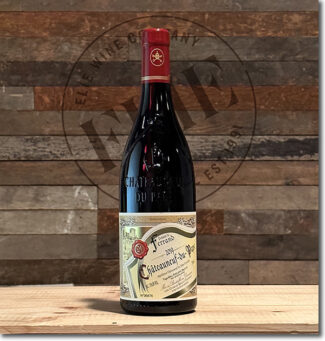 1. Domaine de Ferrand, 2019 Châteauneuf-du-Pape ($64)
1. Domaine de Ferrand, 2019 Châteauneuf-du-Pape ($64)
85% Grenache with the rest a field blend of allowable varieties, including Bourboulenc, Cinsault, Mourvèdre and Syrah, from a prized neighborhood near Orange; the wine displays wildflower, Asian spices, lavender and Bing cherry.
Domain Giraud (AOP Châteauneuf-du-Pape)
The estate may be considered the love-child of Pierre and Mireille Giraud, the union of two venerable wine families. Pierre Giraud can trace his winemaking roots back six centuries while Mireille Buou’s family owned a village distillery for several generations. In 1974, the couple began to cultivate ten acres as sharecroppers, and over the course of a dozen years, acquired local land. In 1981, they transformed the Buou distillery into a winemaking operation, and first released a bottling under the name Domaine Giraud.
Among their plots, Pierre and Mireille inherited twenty acres of century-old vines located on the plateau of La Crau, Les Galimardes and on the sandy soils of the Pignan area near the Le Rayas district. In 1998, the couple turned the everyday administration of the domain to their children, Marie and François, both with degrees in viticulture and oenology. The work of plot selection as well as a transition to organic farming is now tasked to the new generation.
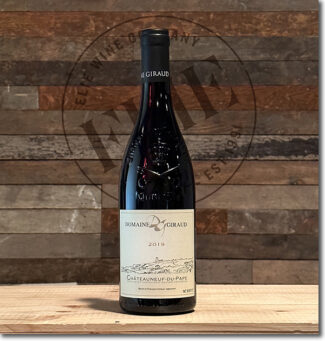 2. Domaine Giraud ‘Tradition’, 2019 Châteauneuf-du-Pape ($58)
2. Domaine Giraud ‘Tradition’, 2019 Châteauneuf-du-Pape ($58)
Red from red: Grenache, Syrah, Mourvèdre grown among the pebbles in the red clay soils of southern Châteauneuf-du-Pape. The vines, from the Bois de la Ville, la Cerise, les Galimardes, le Tresquoys and Valori lieu-dits, are between 60 and 85 years old, each certified organic. The blend is nearly 60% Grenache followed by Syrah and small amount of Mourvèdre fermented separately; the Syrah in French oak barrels with the Mourvèdre and Grenache in stainless steel and concrete. The wine shows cherry liqueur and lavender flavors with Provençal herbs, licorice, and loamy earth. The tannins are polished and the finish long and complex.
Clos Saint Jean (AOP Châteauneuf-du-Pape)
Founded in 1900 by Edmund Tacusel, Clos Saint Jean is currently owned by Pascal and Vincent Maurel, Edmund’s great-great grandsons. Under the watchful eye of the late enologist Philippe Gambie, Clos Saint Jean has become the preeminent estate espousing the modern style of winemaking in Châteauneuf.
The various vineyards of Clos Saint Jean are located primarily in the region of Le Crau. This plateau is perhaps the most iconic of the many terroirs of Châteauneuf-du-Pape, iron-rich red clays topped with pebbles. While about 60% of their vineyards are located here, specifically in the lieu-dits of Côteau de Saint Jean and Cabane de Saint-Jean, another 40% are located in alluvial clay and sandy soils adjacent to the plateau. They also own a small parcel of Mourvèdre in the lieu-dit of Bois-Dauphin near Château Rayas planted on sandy, limestone-rich soils.
The farming at Clos Saint Jean is fully sustainable due to the warm and dry climate which obviates the need for chemical inputs. Vincent and Pascal employ organic methods for pest control, mainly pheromones to prevent pests from taking up Le Crau with Châteauneuf-du-Pape on the horizon.
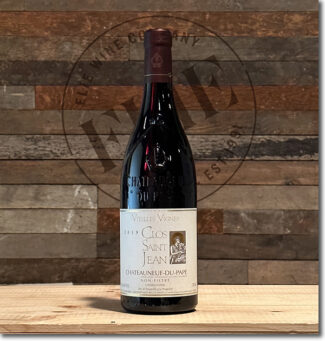 3. Clos Saint Jean ‘Vieilles Vignes’, 2019 Châteauneuf-du-Pape ($58)
3. Clos Saint Jean ‘Vieilles Vignes’, 2019 Châteauneuf-du-Pape ($58)
A blend of Grenache, Syrah, Mourvèdre, Cinsault, Vaccarèse and Muscardin from the Le Crau lieu-dits of Côteau de Saint Jean and Cabane de Saint- Jean and a small parcel of Mourvèdre in the lieu-dit of Bois-Dauphin near Château Rayas planted on sandy, limestone-rich soils. The wine features waves of warmed plum sauce and blackberry purée flavors laced with licorice root and tobacco.
Burgundy: Pinot Noir With Authority
Burgundy’s wine-producing area stretches almost 300 km, from Joigny in Yonne to Mâcon in Saône et Loire. It consists of 5 large vineyard areas; from north to south, Chablis and Grand Auxerrois (in Yonne), Côte de Nuits (in Côte d’Or), Côte de Beaune (in Côte d’Or) Côte Chalonnaise (in Saône et Loire) and Mâconnais (in Saône et Loire )
Burgundy is both the easiest and the most difficult wine region in France to understand. It’s easy in terms of grape varieties: most of the reds are from Pinot Noir, the whites from Chardonnay. Although there are a few small plantings of Aligoté and Gamay scattered throughout Burgundy, the region remains the world’s gold standard for Pinot Noir and Chardonnay.
The arise from grasping the extreme variety of difficulties of terroirs in Burgundy, where vineyard ownership is highly fragmented, resulting in a countless number of producers. In Burgundy, it’s common for a grower to own just a few rows of vines in a vineyard.
[$156] Côte de Beaune Set
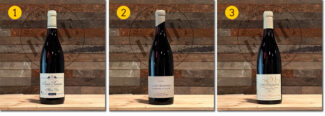
Dijon is Burgundy’s official capital, but unless you’re interested in cellar-aging Gray Poupon, it’s better to think of the spiritual center for all things wine: Beaune. It’s the town where the bacchanalian brotherhood Confrérie des Chevaliers du Tastevin meet, and home to the magnificent Hospices de Beaune, where the world’s most famous wine auction is held in November of each year.
The Côte de Beaune is a narrow strip of land less than 3 miles wide and about 16 miles long that runs in a north-easterly direction from the river Dheune. The climate is continental, with slightly higher temperatures and more rainfall than in its sister appellation, the Côte de Nuits. Vineyards are planted to 58% Chardonnay, with Pinot Noir representing 42% (the rest are Aligoté, Pinot Blanc and Pinot Gris). Red wines from this appellation tend to be bright and fruit-forward in youth; meaty and savory with age.
Domain Alain Gras (AOP Saint-Romain)
Saint-Romain is a village of 200 inhabitants nestling within a valley behind Auxey-Duresses and surrounded by steep cliffs. Neither the population nor the wine trade ever really recovered from the phylloxera blight of the 19th century, and today, only about 7% of the land is under vine. Like Chorey-lès-Beaune, Saint-Romain has no Grand or Premier Cru sites.
The village is divided into two parts, Saint-Romain-le-Haut and Saint-Romain-le-Bas, one on top of the cliffs and one below, with the bulk of the vineyards in the lower section. It is, however, a geologist’s Valhalla. Saint-Romain sits on the lias (the earliest period of the Jurassic) and the blend of limestones and marls includes patches of clay. The vines face south/southeast and north/northeast at altitudes varying from 900 to nearly 1300 feet.
Established in 1979, Alain Gras refers to his domain as ‘young’, and considering that Saint-Romain has been occupied for 6000 years, there may be truth to that. His vines spread over 30 acres in Saint-Romain, Meursault, and Auxey-Duresses.
Gras has found himself as a true ambassador of the Saint-Romain appellation. From a lineage of Burgundy vignerons that dates back five generations, he settled in Saint-Romain with his wife Nathalie and from the outset, their firm mission was to promote the appellation’s value. Joined by his son Arthur, Gras has advanced that value by his passion for rational viticulture and traditional vinification.
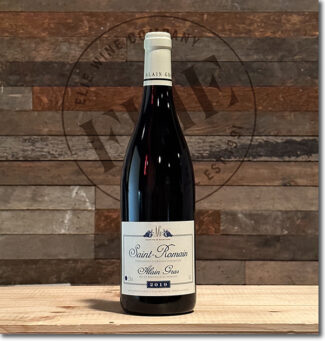 1. Domaine Alain Gras, 2019 Saint-Romain ($54)
1. Domaine Alain Gras, 2019 Saint-Romain ($54)
Pure Pinot Noir from vines averaging 35 years old; the bunches are 100% de-stemmed, fermented on the skins for 12 to 15 days with daily pump-overs, then aged in 15% new oak for 12 months. The wine shows black-cherry on the nose with notes of licorice and cinnamon in the background. Unpretentious wine with a bright floral finish.
Domaine Raymond Dupont-Fahn (AOP Auxey-Duresses)
Orientation saves Auxey-Duresses from the ranks of the ordinary. Surrounded by the hills of Mont Melian, Montagne du Bourdon and Montagne du Tillet, Auxey-Duresses is stretched out along the Beaune-Autun road between Monthélie and Saint-Romain, and the hillsides face south and southeast. This geological quirk, along with the limestone content of the soil, has led to nine designated Premier Cru climats, all located on the south-facing Montagne de Bourdon hillside just behind the commune, and some excellent Village-level wines. In fact, a significant proportion of Auxey-Duresses’ production is sold under the Côte de Beaune-Villages appellation, but with rising temperatures and an increasing interest in Burgundy’s backcountry wines, the value of the commune appellation is increasing year after year.
Raymond Dupont-Fahn is a fifth generation wine maker and began working in the family business as a child. After earning a Bac d’Oenologie diploma, he took over 12 acres of vines from his father, including plots in Meursault, Puligny-Montrachet and Auxey-Duresses. The domain is located in the village of Tailly in Meursault. As a winemaker, Raymond has cut down on the use of new oak from the 40% used by his father to just 10%, with barrels that are no older than three years. He uses no pesticides in the vineyards, aiming to be as sustainable as he can, and harvests slightly earlier than his neighbors to produce wines with better acidity and lower alcohol.
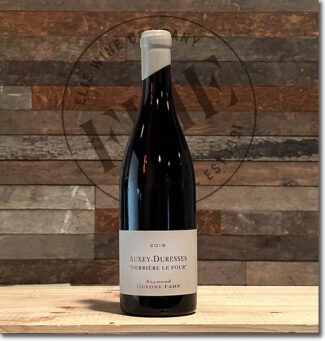 2. Domaine Raymond Dupont-Fahn, 2018 Auxey-Duresses ‘Derrière le Four’ ($50)
2. Domaine Raymond Dupont-Fahn, 2018 Auxey-Duresses ‘Derrière le Four’ ($50)
Meaning ‘behind the oven’, the wine is silky on the palate, with a fine texture entwining around a core of cherries, peonies and a hint of licorice. 100% Pinot Noir, of course, filled with structure and finesse.
Domaine Vincent Ledy (AOP Savigny-lès-Beaune)
Chances are, you love wines from the Rhine and are passionate about wines from the Rhone, but at first glance, ‘wines of the Rhoin’ may look like a typo. In fact, this small river flows from the cliffs of Bouilland through the commune of Savigny-lès-Beaune , and alluvia from the overflow adds fertility to the lower slopes of the hills of Beaune. With nearly nine hundred acres of vineyard, the appellation is one of Burgundy’s largest.
Savigny’s terroir features a gentle gradient that becomes steeper as the altitudes approach 1300 feet, where the geology is similar to that of the great Grand Cru hill of Corton. Favored exposures face the south, where the soils are gravelly and scattered with oolitic ironstone. Near the river valley, the red-brown limestone becomes more clayey and pebbly, while the east-facing slopes consist of sand and limestone.
As rich in history as it is in Premier Cru vineyards (there are 22), Savigny-lès-Beaune was once a social hub where the nobility and clergy rubbed shoulders, and the near mythical regard for the quality of its wine is reflected in a stone carving on a Savigny chateau: “The wines of Savigny are nourishing, theological and keep death at bay.”
Eight years of wine school may make you think of a professional student, but Vincent Ledy took all that accumulated scholastics and applied it to one of the smallest domains in Nuits-Saint-Georges. Scarcely five acres in total, he produces six labels for a total of 8,500 bottles.
“My first vintage was 2007”, he says. “All I had was a red Hautes-Côtes de Nuits. In 2008, I increased the size of the domain a little bit when I found a very small plot for Bourgogne rouge, less than a quarter acre just opposite of Clos de Vougeot on the other side of the Beaune-Dijon road. The soil is deep clay that is reflected in the character of the wine; blackcurrant is the dominating flavor, the same every vintage. Compared with the Bourgogne Hautes-Côtes de Nuits it is very different. The Hautes-Côtes is more about cherry flavors. The maximum yield for the regional appellations is 58 hl/ha, but the yield for my Bourgogne rouge is 50 hl/ha.”
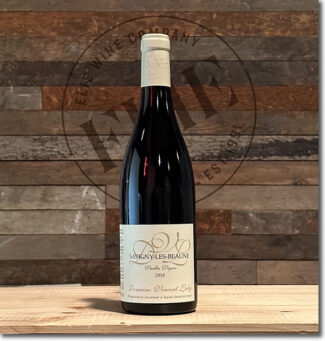 3. Domaine Vincent Ledy ‘Vieilles Vignes’, 2018 Savigny-lès-Beaune ($52)
3. Domaine Vincent Ledy ‘Vieilles Vignes’, 2018 Savigny-lès-Beaune ($52)
From the Villages-level lieu-dits Connardises and Aux Liards, the wine shows vivid ruby colors with garnet red tints. Violet, sweet pepper and hints of toast on the nose, followed by a silken palate and red fruit notes including cloudberry and ripe cherry.
[$222] Coast of Nights Set

‘Côte de Nuits’ is a name that excites the senses; it is mysterious (the name means ‘hills of the night), it is sensuous (95% of its output is built around silk-smooth, hedonistic Pinot Noir) and it is evocative, with wine aromas frequently liked to roses and the spice- box. Hold a bottle of Côte de Nuits in your hands and you hold a key to a kingdom which produces the finest Pinot Noirs in the world. But the grape itself is a mystery within a mystery, and making sense of the individual styles and terroirs of the revered red wine vineyards of Côte de Nuits’ cannot be accomplished with a single bottle. Every village has its story and every vineyard its history; the wines vary by texture, color and dominant flavor notes.
The terroir of Côte de Nuits is built upon a pixel-like plan of vineyards that seems more like a maze than a map. Exposure is vital, and it’s said (tongue-in-cheek) that all the Grand Crus face Germany. The truth is, most of Burgundy is marginal grape country, and the farther north you go, the tougher it gets. But given the opposite conditions—compost-rich soil, plenty of sunshine and a long growing season with copious rainfall—you end up with happy vines that do not produce particularly complex wines. The stony soils of the Côte de Nuits’ Grand Crus excel chiefly because they are poor; the limestone bedrock offers abundant levels of elemental calcium, which helps open up the capillaries in the soil, increasing porosity and assisting root colonization. Stone fragments add to the drainage capability of the soil and reciprocally,
Domaine Jean-Michel Guillon & Son
‘Local boy makes good’ is a common enough tale in Burgundy, where land—which can command a price tag twice that of Bordeaux—is generally held by families. Most success stories involve inheriting it or marrying it. Rare is the breakthrough of an outsider who can, for example, step off a train in Gevrey-Chambertin without connections or formal wine training and forge a Burgundian empire within an enclave already pretty imperialistic.
Enter Jean-Michel Guillon. Born into a military tradition, Jean-Michel Guillon chose to settle in France after his past service in the Polynesian Islands and in 1980, without much formal training, planted grapes on five acres of land. What began as a nascent fascination grew into an overarching passion, and the estate today covers nearly forty acres spread over more than 20 appellations. It is work that, like the best Gevrey-Chambertin wines, took years to peak, both stylistically and critically: 2020 turned out to be Jean-Michel Guillon’s best vintage ever.
He explains: “It is all the result of my love for this land, and any acclaim I have received is based on innovative production processes and more importantly, taking into account the ecological needs of the vine. The climate crisis and the scarcity of natural materials is taken very seriously at the winery. Global warming is at the heart of the destruction of habitat destruction and the appearance of certain diseases. In order to facilitate cultivation and harvesting, we have worked diligently to reduce our carbon footprint by using phytosanitary products that respect the environment.”
Most Burgundy fans recognize Nuits-Saint-Georges as the focal point of the Côte de Nuits, and it is such quintessential Pinot Noir country that this varietal makes up more than 97% of the plantings. The soils in the northern sector derive from pebbly alluvia washed down from up-slope, and in the low-lying parts from the silty deposits of the River Meuzin. In the southern sector the alluvia at the base of the slope originate in the combe of Vallerots where there are deep marly-limestone soils, while at the top of the slope, the rock is almost at the surface. Exposures are mostly to the east or southeast, and while the appellation does not contain any Grand Cru vineyards, its 41 Premier Cru sites are rated among the finest in the region.
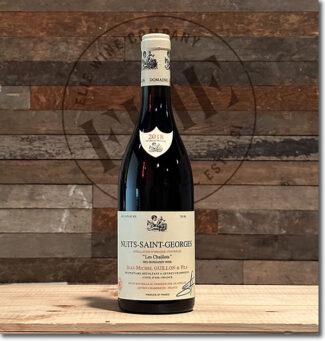 1. Domaine Jean-Michel Guillon & Fils, 2018 Nuits-Saint-Georges ‘Les Chaillots’ ($83)
1. Domaine Jean-Michel Guillon & Fils, 2018 Nuits-Saint-Georges ‘Les Chaillots’ ($83)
At the age of 26, having studied viticulture and oenology and put in six years with a communications firm in Paris, Thibault Liger-Belair gave in to his true passion and began to make wine. The following year (2002) represented his first harvest of Nuits-Saint-Georges, Nuits-Saint-Georges Charmottes, as well as Vosne-Romanée Aux Réas. Les Grands Chaillots is an assemblage of different terroirs; a third originates in his own Nuits-Saint Georges vineyards and the rest is purchased from various parcels Marsannay and Ladoix Serrigny. Says Liger-Belair: “This wine is a little Chambolle-like in style. The palate is sweet and candied on the entry with blood orange fusing with red cherry/kirsch notes with good delineation on the finish.”
In the far northeast of Burgundy, about ten south of Dijon with the valley of Saône valley to the east lies the Rodeo Drive of red wine, Gevrey-Chambertin . The town itself is touristy, picturesquely festooned with vineyards from end to end, but certainly one of the must-visit areas on any French wine tour. Should the tour include a tasting (and if it doesn’t, skip it), you’ll find that the wine, at all levels of quality, share certain characteristics, many of them in seeming contradiction: In general, Gevrey wines are big without being heavy, rich without being cloying and full-bodied while retaining a velvety, delicate texture.
This inherent tension is what makes Gevrey-Chambertin a superlative, even in the star-studded Côte de Nuits. But it must be remembered that this quality represents many centuries of trial and error: The best vineyards are based around the foothills of the famous hill of Lavaux, on the east-facing slope where they are hit by the morning sun, which disperses any fog and warms the vineyard into the late afternoon. Soils, of course, impart their geological magic–the vines in the Premier and Grand Cru sites are grown on shallow brown limestone with sections of clay which holds onto the heat of the day, warming the vines overnight and further increasing their ripeness and power. Organoleptically, the Pinot Noirs of Gevrey suggests blackcurrants and jammy strawberry compote when young, with distinct notes of licorice heightened by maturation in new oak casks. As these wines age, they acquire earthy notes aromas that hint at animal pelts, musk, spicy vanilla and Havana cigars. The top-flight Crus are unparalleled, of course, and no more apt descriptor for them exists than ‘blood and iron.’
 2. Domaine Jean-Michel Guillon & Fils, 2018 Gevrey-Chambertin ‘Les Crais’ ($78)
2. Domaine Jean-Michel Guillon & Fils, 2018 Gevrey-Chambertin ‘Les Crais’ ($78)
The Pinot Noir parcel ‘Les Crais’ sits east of the main road on the Brochon side of Gevrey-Chambertin; it was planted in two parts, one in 1979/1980 and the other in 1990/1991. Soils are gravel made of decomposed limestone. The wine is racy and intense with juicy raspberry aromas, ripe cherry and anise sparks, offering remarkable length.
Marsannay is the northernmost village in Burgundy’s heart and is a stellar introduction to the galaxy of possibilities offered by the Côte d’Or. That is because, as a fairly new invention within the wine hierarchy (Marsannay only achieved village status in 1987, prior to which its grapes were used for regional wines), price has not yet caught up to quality, even among other Village-level wine .
Perhaps more than in any other wine region, Burgundy’s fans are label-obsessed and purchase accordingly—and appropriately. Since Marsannay contains none of the storied Grand or Premier Crus in the carefully delineated Burgundy classification system, these wines represent unparalleled value, especially since many individual estates have forged new commitments to improve what history and nature has provided.
 3. Domaine Jean-Michel Guillon & Fils, 2018 Marsannay ‘Les Quenicières’ ($61)
3. Domaine Jean-Michel Guillon & Fils, 2018 Marsannay ‘Les Quenicières’ ($61)
Lavishly oaked with creamy and toasty aromas behind the floral—peony, iris and clove. The mouth is round and gourmet while revealing blackcurrant and spicy aromas with elegant tannins on the finish and persistent minerality behind earthy notes of fern, moss and truffle.
[$145] Coast of Nights Backcountry Set
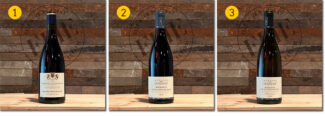
Not recognized officially until 1961, the Hautes Côtes region covers 16 communes in the department of Côte-d’Or, plus the more elevated areas of four communes in the Côte de Nuits. The dividing line between the Hautes Côtes de Nuits and the Hautes Côtes de Beaune runs through the village of Magny-Iès-Villers.
Overlooking the slopes of Gevrey-Chambertin and extending as far as the wood of Corton, the Hautes Côtes de Nuits is known for wild and rugged beauty and the red wines for being attractive balanced between flesh and tannins and the few whites being vivacious and fresh. The vineyards cover all these slopes which enjoy favorable exposures and proudly preserve their proof of nobility going back to Vergy and the abbey of Saint-Vivant.
The appellation name can only be granted after the wines have been subjected to certification via tasting and analysis.
Domaine Thibault Liger-Belair (AOP Hautes-Côtes de Nuits)
The estate (originally called Comte Liger-Belair) was created in 1720 in Nuits-Saint-Georges, and soon became one of the most important wine growing and trading houses in Burgundy. After many years and successive generations had met with varying degrees of success, Thibault Liger-Belair took over in 2001, and found the 20-acre estate in need of some attention. His immediate switch to organic farming was a matter of necessity as much as responsible stewardship: “The vineyards were in a bad condition, with compacted soils. I couldn’t do anything else other than organics,” he says, and in 2004, he discovered biodynamics: “I saw a change in my vineyard, which went from gray soils to brown/red and then sometimes to black.”
Still, his overarching philosophy is that each vineyard needs something different: “I don’t like 100% of anything: new barrels, whole clusters, etc. My job is to decide which grapes we have and then decide a viticulture and winemaking approach.”
In 2018, he made wine from 23 different appellations and purchased grapes from a ten more, where he had worked the vines himself. “We don’t buy grapes where we don’t do the work,” he maintains.
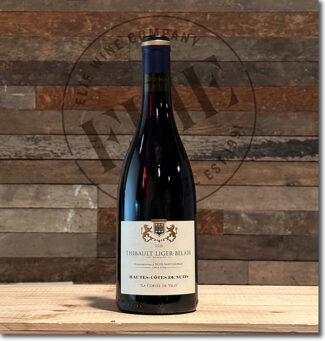 1. Domaine Thibault Liger-Belair ‘Corvée de Villy’, 2018 Hautes-Côtes de Nuits ($49)
1. Domaine Thibault Liger-Belair ‘Corvée de Villy’, 2018 Hautes-Côtes de Nuits ($49)
‘Corvée de Villy’ is a bit more than an acre and a half of stony earth in the upper reaches of Nuits-Saint-Georges on the Lime plateau. It was planted to Pinot Noir in 1988 and according to Liger-Belair, is comprised of a specific blend of two soils that influence the wine in two steps:
“The first 30 centimeters of the soil are composed of red-orange lava clays rich in ferrous elements and then it is the primary limestone that formed the basis for the creation of the Côte. The nose is floral with the aromas of red fruits; the palate is richer and more ‘gourmet’ on first impressions and finishes with freshness and minerality brought by the limestones.” 3,300 bottles made.
Domain Lécheneaut (AOP Hautes-Côtes de Nuits)
Having been founded in the 1950s by Fernand Lécheneaut, the domain launched modestly with five acres of vineyard in Nuits-Saint-Georges, Chambolle-Musigny and Morey-Saint-Denis. During these early years, Lécheneaut sold bulk wine to traders, but in 1985, his sons Philippe and Vincent took over and brought with them an expanded vision. They grew their vineyard holdings while they began to bottle at the estate. The new Lécheneaut plots, including several Premier Cru vineyards in Chambolle-Musigny and Gevrey-Chambertin, speckle the map of the Côte de Nuits from north to south, but judiciously—many of the holdings are under an acre. With vines in 23 appellations, the total land under their management is around thirty acres.
As the Lécheneaut brothers approach retirement, Vincent’s son Jules has joined the team with a view toward combining lessons learned in his experiences working vines in Oregon with the exceptional terroir his family nurtures.
 2. Domaine Lécheneaut, 2018 Bourgogne Hautes-Côtes de Nuits ($49)
2. Domaine Lécheneaut, 2018 Bourgogne Hautes-Côtes de Nuits ($49)
From a two acre plot on the same Jurassic chalk plateau, from vines with an average age of 63 years. The wine is beautifully balanced, with aromas of raspberry, black cherry and licorice. Direct and firm flavors with granular, but well-integrated tannins. 7500 bottles made.
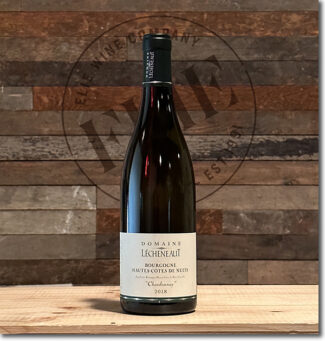 3. Domaine Lécheneaut, 2018 Bourgogne Hautes-Côtes de Nuits White ($47)
3. Domaine Lécheneaut, 2018 Bourgogne Hautes-Côtes de Nuits White ($47)
Situated on a hillside facing south at about 1150 feet, the vines cover the sloping valley cutting through the Jurassic chalky plateau, west of the Côte. The substrate is identical to that of the vine covered hillside, but the surface formations are very thin, at times non-existent. The chalky-clay soils are a result of the alteration of the limestone and marls substrate and are ideal for Chardonnay. The wine shows hawthorn and honeysuckle on the nose, which mingles on the palate with buttery apple, lemon, and hazelnut. Vines average 25 years old; 2100 bottles made.
Bordeaux: The Art of The (Cabernet+Merlot+Cabernet Franc) Blend
Bordeaux is a tale of two banks, split in two by the Gironde Estuary; Bordeaux wines are often described by the side of the river where the chateaux are found. As the little brother is often overshadowed by the elder, so the First Growths of Bordeaux’s Left Bank have often basked in the brightest spotlights while those found along the Right Bank have hovered in the wings. Robert Parker Jr. may be credited (at least in part) for bringing some of these understudies center stage with critical high-fives and scores in the 90s. This is because Right Bank wines tend to be more in tune with his preferred style—plush, juicy and jammy with melt-away tannins, due in part to its soils being often better suited to soft, early-ripening Merlot rather than the austere, big-shouldered and acidic Cabernet Sauvignon that predominates in the Left Bank.
[$225] Pauillac Set
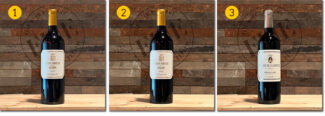
For an appellation slightly under 3000 acres—only nine square miles—Pauillac, on the left bank of the Gironde estuary—boasts a surprisingly varied terroir. Top estates, including three of the five First Growth castles in the 1855 Classification, are located near the river, and each has built a reputation on emphasizing their differences rather than their similarities. A practiced oenophile can tell them apart by a whiff from the glass. And beyond the wine, that whiff also provides a vision into Bordeaux’s family history.
The single factor that all classified Pauillacs have in common is that their cuvées are built around a primary grape variety, Cabernet Sauvignon. Most Pauillac is comprised of at least 70% Cabernet Sauvignon, which struts its stuff amid the maritime climate and gravelly soil of southwest France better than anywhere else on earth. The irony, of course, is that what it brings to the table is enhanced, rather than masked, by the addition of complimentary grapes. As such, Cabernet Franc, Merlot, Carmenère, Petit Verdot and Malbec are also permitted under the Pauillac appellation laws. It is the art of the blend that creates the uniqueness in Pauillac wines; the hallmark of the individuality that is the Holy Grail of the appellation’s winemakers.
Château Pichon-Comtesse (AOP Pauillac)
With a focus on ‘impeccable land stewardship’, Château Pichon-Longueville-Comtesse-de-Lalande’s 1982 vintage garnered a perfect 100 points from wine critic Robert Parker. That is one of the reasons the estate is often referred to as a ‘Super Second’, meaning that it consistently produces wine to rival the First Growths classified in 1855 despite its official status as a Second Growths, or Second Growth.
In 2006, the majority interest in Château Pichon-Longueville was sold to the Rouzaud family, which also owns the Champagne house Louis Roederer.
All five Bordeaux grapes are grown on the estate’s two hundred acres, dominated by Cabernet Sauvignon, Merlot and Petit Verdot. Wines from Comtesse de Lalande are considered among the most voluptuous wines in the Médoc due to the high proportion of Merlot used in the final blend; the increasing proportion of Cabernet used in modern cuvées to add structure does not diminish the amount of Merlot used; it means less of the other varieties. The current varietal reflects the vineyard plantings, roughly 65% Cabernet Sauvignon, 25% Merlot, 7% Cabernet Franc and 3% Petit Verdot. The heart of these plantings is a 150-acre parcel of vines situated southwest of Pichon Baron, close to the manor. The best parcels overlook the river and are filled with vines with an average age of 40 years, although the oldest vines are nearly 90,
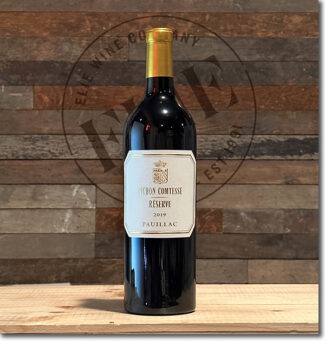 1. Château Pichon Comtesse ‘Pichon Comtesse Réserve’, 2019 Pauillac ($75)
1. Château Pichon Comtesse ‘Pichon Comtesse Réserve’, 2019 Pauillac ($75)
51% Cabernet Sauvignon, 46% Merlot and 3% Cabernet Franc, the wine offers intense blackberry and briary scents mixed with mint. Crafted with superb precision, it is a remarkable value for a Second Wine and promises to age well in the bottle.
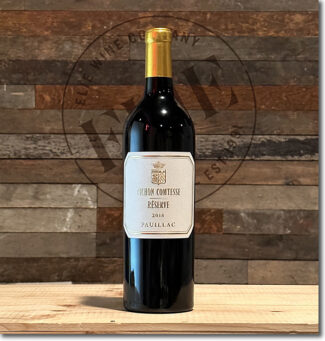 2. Château Pichon Comtesse ‘Pichon Comtesse Réserve’, 2018 Pauillac ($69)
2. Château Pichon Comtesse ‘Pichon Comtesse Réserve’, 2018 Pauillac ($69)
A textbook Pauillac second wine that outstrips many of Pauillac’s first wines. An early-drinking incarnation of Pichon Comtesse’s Grand Vin, the blend is 53% Cabernet Sauvignon and 42% Merlot with the balance Petit Verdot and Cabernet Franc. The name changed with the 2017 vintage, becoming the-wine-formerly-known-as-‘Reserve de la Comtesse’; the new name is cleaner and the label somewhat sleeker. The wine remains, as always, plush and round, with silken black fruit on the fore-palate and vibrant with ripe raspberries and baked plums above licorice, cedar, ground cloves and wood smoke.
 3. Château Pichon Comtesse ‘Pichon Comtesse Réserve’, 2015 Pauillac ($81)
3. Château Pichon Comtesse ‘Pichon Comtesse Réserve’, 2015 Pauillac ($81)
A blend of 53% Cabernet Sauvignon, 40% Merlot and the balance, Cabernet Franc and Petit Verdot. 2015 was a brilliant vintage and the wines continue to develop; this one surpasses most châteaux’ Grand Vins with deeply expressive notes of black cherry, graphite, smoke, licorice and incense.
[$299] Saint-Estephe Set
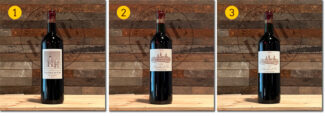
Located at the northern end of the Haut-Médoc in an undulating sea of quartz, pebbles, clay and limestone, the wines of Saint-Estèphe are known for both finesse and longevity. Accounting for nearly 8% of total Médoc production, the terroir of Saint-Estèphe is considered among the most favorable in Bordeaux—the limestone is ideal for Cabernet Sauvignon, while the heavier, moisture-retaining clay favors Merlot; the two varietal that make up the lion’s share of Bordeaux blends.
Château Cos d’Estournel (AOP Saint-Estèphe)
Cos d’Estournel is found amid undulating terrain at very heart of Médoc, and the name itself was chosen by the original owner, Louis Gaspard d’Estournel, to commemorate the rolling landscape on which the estate stands; ‘cos’ is an old dialectical word for hill. Known for its ornate, pagoda-topped castle, Cos d’Estournel was purchased in 2000 by entrepreneur Michel Reybier, a man determined to keep the extraordinary personality of the estate intact. “It will be Cos and only Cos,” he insisted at the time and maintains to this day: “At first glance, I was attracted by the history of the place. And then when I visited the estate, I instantly felt how unique, how exceptional it is.”
With roots sunk deeply in tradition, d’Estournel is nevertheless quite happy to employ state-of-the-art technique, and despite the labor-intensity of the entire process, much of it is hands off: Upon arrival, the temperature of the grapes is lowered to around 40 degrees Fahrenheit to slow oxidation, and then is cold macerated with pump-overs done entirely by gravity recycling. Gravity cellars allow for complete nonintervention in making the wine, and the use of this method allows for the purest possible expression of the fruit grown in the gravelly, rock, and stone soils of Cos d’Estournel.
 1. Château Cos d’Estournel ‘Les Pagodes’, 2016 Saint-Estèphe ($74)
1. Château Cos d’Estournel ‘Les Pagodes’, 2016 Saint-Estèphe ($74)
2016 was a superb vintage in northern Médoc, and especially in Saint-Estèphe. 76% Cabernet Sauvignon, 23% Merlot and 1% Cabernet Franc, the wine delivers blackberry, citrus, spice, earth and cassis.
 2. Château Cos d’Estournel ‘Les Pagodes’, 2010 Saint-Estèphe ($110)
2. Château Cos d’Estournel ‘Les Pagodes’, 2010 Saint-Estèphe ($110)
2010 produced charming and classically styled wines throughout Saint-Estèphe, with the majority of estates producing wine with ample concentration of fruit and soft, sweet tannins.
This blend of 43% Merlot, 55% Cabernet Sauvignon and 2% Petit Verdot is matured in 50% new oak. It shows cherry paste, chocolate, menthol, licorice and dark spices running through cedar and graphite with of tobacco and allspice putting in a late appearance.
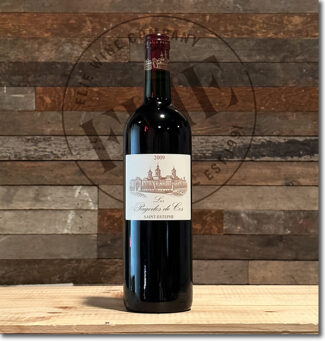 3. Château Cos d’Estournel ‘Les Pagodes’, 2009 Saint-Estèphe ($116)
3. Château Cos d’Estournel ‘Les Pagodes’, 2009 Saint-Estèphe ($116)
2009 was a fine vintage for St. Estèphe, with Cabernet Sauvignon performing especially well, with dense, but perfectly ripe tannins and phenolic ripeness across the board. This wine is drinking beautifully, with a deep, opaque purple hue and a vibrant bouquet of blackberries, cherries, plum and d’Estournel’s characteristic Asian spices. The finish shows a hint of cedar with a depth of fruit rising from well-aged aromatics.

- - -
Posted on 2022.12.24 in France | Read more...
White Christmas: Chardonnay with Authority Two Top Domaines With Enviable Holdings in Chablis Premier Cru Pack (6-Bottle $349) + Grand Cru Pack (5-Bottle $576) + Grand, Premier, Village Pack (5-Bottle $399)
The elegance and finesse of Chablis with its unparalleled combination of lively fruit and mineral-driven crispness make it an ideal counterpoint for the rich, often fatty fare that tends to grace most holiday tables. Count the fish in an Italian Christmas Eve’s ‘Festa dei Sette Pesci’ and you’ll find a unique Chablis for each of them, and from a Christmas ham to the brisket and latkes that show up on many Hanukkah sideboards, Chablis has the weight and pedigree of tradition graced with price points to suit all budgets. Not only that, but the crystalline purity of the wine is, in many ways, symbolic of the winter season itself.
The three packages offered here provide a cross-section of some of the finest terroirs in Chablis; named climats from two of the region’s most reliable producers, Domaine Long-Depaquit and Domaine Laroche. Both estates combine experience, tradition and a firm commitment to land stewardship, ensuring a sustainable future in an era of changing climate. Whether you celebrate the twelve days of Christmas or the eight days of Hanukkah, or any holiday permutation in between, there is a Chablis to suit your mood.
What Lies Beneath
“The vineyards of Chablis have a single religion,” writes Jacques Fanet in his book ‘Les Terroirs du Vin’: “Kimmeridgian.”
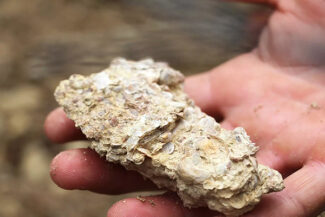
Kimmeridgian limestone marl – courtesy of The Source

Soil in Chablis; big chunks of Portlandian limestone on top with soft Kimmeridian limestone marls underneath.
In the middle of the 18th century, a French geologist working in the south of England identified and named two distinct types of limestone from the Jurassic Era; Portlandian, which he found in Dorset with a layer of dark marl just below it, subsequently named after the nearby village of Kimmeridge. These strata also run across the Channel and through the north of France, where they become a part of the ‘Paris Basin’ and play an indispensable role in creating the soils. A slow geological tilting of this basin allowed the Seine, Aube, Yonne, and Loire rivers to cut through the rising ridges and form an archipelago of wine areas in Champagne, the Loire Valley and ultimately, Burgundy.
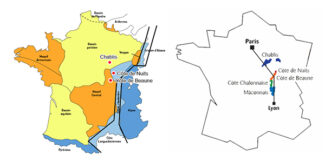
Chablis remains the biggest island in the Kimmeridgian chain and it is home to some of the finest Chardonnay terroirs found on earth. The defined region ‘Chablis’ was recognized in 1923 by the Wine Tribunals as requiring a sub-soil of Kimmeridgian limestone while wine grown anywhere else in Chablis would be classed Petit Chablis. The Grand Cru mid-slope in Chablis maps almost perfectly to the Kimmeridgian outcrop, with the soft, carbonate-rich mud rock capped by Portlandian Barrios limestone and supported by Calcares à Astarte, yet another type of limestone.
And now for the interesting part: As vital as Kimmeridgian soil is to the top Cru classifications in Chablis, it is not the primary consideration. Geologic conditions identical to those experienced by the Grand Cru slope extend both northeast and southwest, but the vineyards on those sites are classed as Premier Crus. As a matter of fact, the reference to Kimmeridgian limestone in the definition of Chablis was discontinued in 1976, a tacit admission that slope and orientation are of even greater importance to wine quality.
Chardonnay in Chablis: Acid Trip
Acidity in wine must be handled with the same circumspection as in the laboratory—make a wrong move and you end up with a wincing sting; in either case, it’s a fail. Balance is the key in all things wine, but clearly, wines from more northerly regions face a bigger struggle in balancing ripeness with sharpness, and Chardonnay is the poster-child varietal for ‘If life hands you lemons, make Chablis.’
The line between refreshing tension and acid reflux may be fine, and one reason that aging Chablis has always been a requirement in Cru versions is that time soften acids and allows the briny, saline-driven savoriness to blossom. Nearly all Chablis undergoes secondary malic fermentation prior to bottling, a technique that transforms malic acid into softer lactic acid and provides a more stable environment. Most Premier and Grand Cru Chablis also see time in neutral oak to further the mellowing process before facing the catwalk of consumption.
2020 Vintage: Superb Harvest with Outstanding Aging Potential
In 2020, the problem for Chablis was not reining in grape acid, but retaining it. Like much of Western Europe, Chablis experienced the warmest 12 months on record, warmer even than 2003. This meant an early start to the 2020 growing season and, while there were outbreaks of frost, the damage remained minor, particularly when compared to 2021.
According to Domaine Long-Depaquit’s Matthieu Mangenot, “2020 was a very easy vintage to manage. With a 40% reduction in rainfall and over 300 hours more sunshine than average, there were next to no disease issues in the vineyard. The dry weather even retarded weed outbreaks and this meant little to no spraying was required.”
One of the surprises that has emerged from persistent summer heatwaves brought about by a changing climate is a somewhat unique ability for Chardonnay to adapt without losing its sense of place. 2020 is a case in point, according to Mangenot: “Despite the heat and dryness, the alcohol levels are normal, the acidity levels are exceptional and the overall balance on the palate means the wines are representative of an excellent vintage for the region.”
Domaine Long-Depaquit
At more than 150 acres, Long-Depaquit is one of the largest domains in Chablis, renowned and respected not only for its sprawling terroir but for a commitment to low-intervention, organic farming. In 2014, upon completion of a new winery, the estate has focused on quality improvements centered on earth-friendly approach; in 2019, the property was awarded the highest Level 3 Haute Valeur Environmentale certification.
Beaune-based négociant Albéric Bichot has managed Long-Depaquit since 1967, and the current winemaker, Matthieu Mangenot, joined in 2007, after dual training as an agronomist and an oenologist in South Africa, Lebanon, Bordeaux and especially, Mâconnais and Beaujolais. He has spearheaded the domain’s comprehensive approach to authenticity and sustainability.
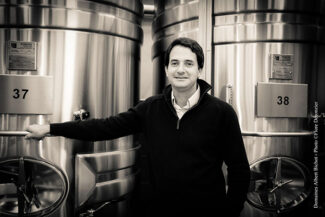
Matthieu Mangenot
Long-Depaquit produces around 180,000 bottles of Chablis each year, and like most large estates in the region, the lion’s share is village wine fermented and aged in 100% stainless-steel tanks. Wine from their six Premier Cru sites and six Grand Cru sites wines see a small percentage fermented and aged in barrels between two and five years old; Grand Cru Les Clos typically sees a higher percentage (25 to 35%) of oak.
Their flagship cuvée is Grand Cru La Moutonne, drawn from a 5.8 acre monopole vineyard that straddles two Grand Crus (95% in Vaudésir and 5% in Les Preuses) in a steep amphitheater capable of producing some of the richest, most complex wines in Chablis.
The Premier Crus: Structure With Good Length
Domaine Long-Depaquit Premier Cru Package: Six Bottles for $349
Longevity is not only a hallmark of this appellation’s palate sensation: more than half of the climats entitled to wear the ‘Premier Cru’ label had their present-day names by 1429. Chablis Premier Cru represents about 14% of Chablis production, with sites scattered on either side of the Serein River and covering around 2000 acres. As in Bordeaux, where the location of the vineyard compared to the Dordogne and the Garonne determines the style and quality of the wine, the case is similar in Chablis, where left bank wines tend to be more floral and fruit-centered whereas right bank wines are steely and mineral-focused.
Further illuminating the subject is Marc-Emmanuel Cyrot of Domaine Millet, who observes, “The right bank provides complex, well-balanced wines, with a maximum of minerality and vivacity. Those on the left bank are very aromatic, with a less full-bodied character.”

Again, as in Bordeaux, this is the result of soil, topography and exposure to the sun: On the right bank, close to the village, many of the well-known Premier Crus share similar geology, exposition and characteristics with the Grand Crus. To the left of the river, a different style emerges, with many steep-sided vineyards oriented southwest-northeast, east-facing slopes and varying ratios of limestone and clay.
Of the 40 vineyards that fall under the Premier Cru category, 17 are reckoned to be superior, or ‘flag-bearing’ climats. Among these 17, vineyard differences are pronounced and subtle, but with age, the individualism of the respective climats becomes even more apparent.
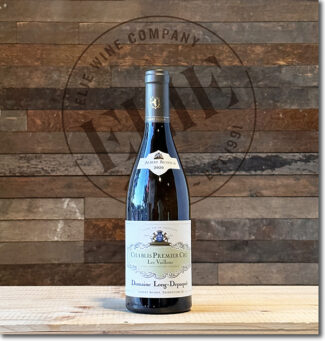 Domaine Long-Depaquit, 2020 Chablis Premier Cru Les Vaillons ($52)
Domaine Long-Depaquit, 2020 Chablis Premier Cru Les Vaillons ($52)
Found in a valley to the southwest of Chablis on the western side of the Serein river, a southeasterly face and high-quality Kimmeridgian soils below meld to make this large climat a sought-after location. At 318 acres, the Vaillons vineyard is made up of eight, smaller climats, all Premier Crus in their own right.
Tensile and incisive, the wine displays classic aromas of crisp green apple, citrus zest, white flowers and oyster shell with racy acids and loads of depth at the core.
 Domaine Long-Depaquit, 2020 Chablis Premier Cru Les Lys ($61)
Domaine Long-Depaquit, 2020 Chablis Premier Cru Les Lys ($61)
Les Lys is a Premier Cru climat within the larger, umbrella Premier Cru vineyard of Vaillons. While contiguous with the latter, Les Lys has a unique aspect, bordering Séchets but facing northeast over the town of Chablis towards the Chablis Grand Cru vineyards; the rest of the Vaillons climats face generally southeast.
A textbook example of how brightly Premier Cru Chablis can shine; grilled pineapple and yellow apple on the nose with a palate of salt-preserved lemon, crushed hazelnut and fruitcake spices.
 Domaine Long-Depaquit, 2020 Chablis Premier Cru Les Beugnons ($56)
Domaine Long-Depaquit, 2020 Chablis Premier Cru Les Beugnons ($56)
Les Beugnons is located at the western extremity of the Valvan valley on the left bank of the Serein River, where the favorable exposure is very favorable for creating expressive and charming wines.
Rich aromatics of pear peel, slight smoke, yeasty lees and candied lemon following through with a juicy palate reminisicent of ripe Mirabelle and a touch of honey.
 Domaine Long-Depaquit, 2020 Chablis Premier Cru Fourchaume ($57)
Domaine Long-Depaquit, 2020 Chablis Premier Cru Fourchaume ($57)
Fourchaume is one of Chablis flagship climats. At 326 acres, it sprawls along the eastern banks of the Serein river where a favorable south-to-southwesterly aspect and high-quality limestone soils beget a distinctive wine with rounded citrus flavors underwritten by fresh minerality.
A crystalline, full-bodied, mineral Chablis with buttery rich notes of ripe apple and sunny Meyer lemon. Tautly-structured with a bracing acidity and a lingering finish.
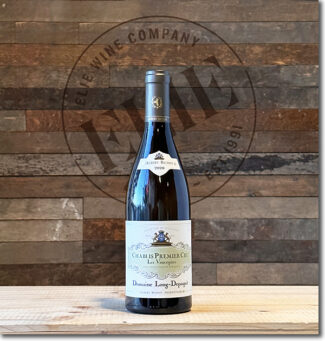 Domaine Long-Depaquit, 2020 Chablis Premier Cru Les Vaucopins ($62)
Domaine Long-Depaquit, 2020 Chablis Premier Cru Les Vaucopins ($62)
Les Vaucopins is found on the right bank of the Serein River in the commune of Chichée, five miles east of Chablis. Its terroir has an uncanny resemblance to the Grand Crus, with southern exposure, steep slopes and numerous Kimmeridgian outcrops.
An elegant and refined wine that displays milk caramel notes behind nuances of oak, there is a hint of sweetness on the palate with flavors of candied fruit, apricot, and quince.
 Domaine Long-Depaquit, 2020 Chablis Premier Cru Montmains ($61)
Domaine Long-Depaquit, 2020 Chablis Premier Cru Montmains ($61)
Another flag-bearing climat, Montmains also encompasses the climats of Butteaux and Forêts to cover approximately 300 acres. With a long, narrow southeast and northeast exposure, Montmains sees early morning sun, but is somewhat colder than nearby climats and usually sees a later harvest.
Lively, chalky, pure and accessible with white pepper, stone and some aniseed with a tight, linear focus, the wine is taut and refined with a wonderful finish.
The Grand Crus: Keeping Potential
Domaine Long-Depaquit Grand Cru Package: Five Bottles for $576
The ne plus ultra in the region, Chablis Grand Cru, represents only about 1% of total Chablis production; it is comprised of seven climats within the commune of Chablis itself and in the hamlets of Fyé and Poinchy on the right bank of the Serein River, which runs to the northeast of the village of Chablis. The names of the vineyards (Blanchot, Bougros, Les Clos, Grenouilles, Preuses, Valmur and Vaudésir) feature prominently on labels due to the distinct characteristics of each, and are found at elevations between 325 and 825 feet for a total of about 250 acres.
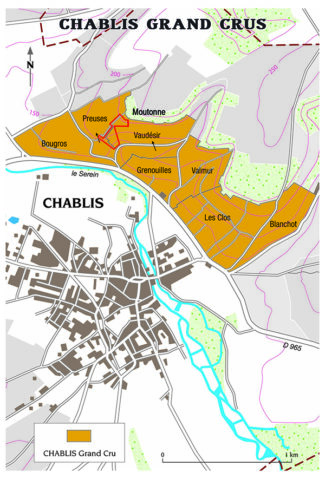
The signature of a Grand Cru Chablis is the perfect balance of fruit-based fattiness and bracing acidity; it is a refreshingly dry wine with nuances based on the individual vineyard, but the common notes to expect include the elusive scent of freshly-sliced mushrooms and a discreet touch of honey. Most impressive in a wine with limited exposure to the preservative qualities of oak is its ability to age and improve, ten years minimum with fifteen years or more well in the realm of possibility. With maturity, the earthiness and nutty-qualities of Grand Cru Chablis increase as forward citrus fruit fades and an intriguing spiciness takes over.
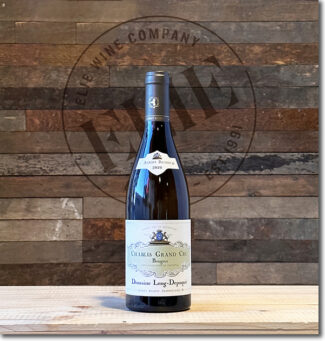 Domaine Long-Depaquit, 2020 Chablis Grand Cru Bougros ($102)
Domaine Long-Depaquit, 2020 Chablis Grand Cru Bougros ($102)
Bougros is located at the northwestern edge of the Grand Cru hillside; it covers nearly 39 acres of slop on the Right Bank of the Serein and tends to produce wines that are considered, rounded and less austere in youth than those from the other Grand Cru climats.
Silky and expressive, the wine offers brioche, toast and ripe green apple with petrol, dried peach and shellfish nuances.
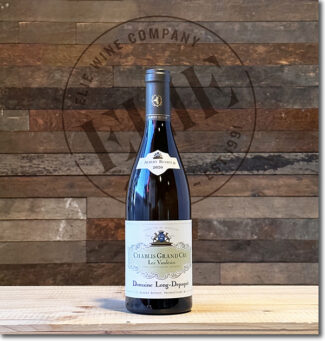 Domaine Long-Depaquit, 2020 Chablis Grand Cru Les Vaudésirs ($127)
Domaine Long-Depaquit, 2020 Chablis Grand Cru Les Vaudésirs ($127)
At the heart of the Grand Cru area, the Vallée des Vaudésirs is a textbook example of the geology and history of Chablis, bearing witness to the erosion that followed the last ice age. Long-Depaquit’s vineyard is more than forty years old, planted in the ‘endroit des Vaudésirs’, where, beneath steady sunshine, Kimmeridgian outcrops are the most numerous.
The wine’s bouquet is redolent of citrus fruit and delicate lily and chamomile notes while the palate offers green apple notes, hint of white peach and a hint of coastal herbs.
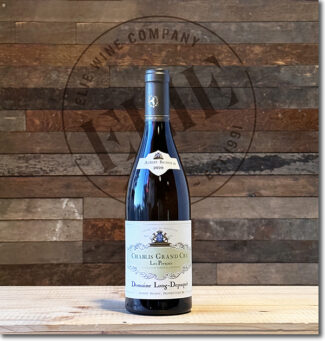 Domaine Long-Depaquit, 2020 Chablis Grand Cru Les Preuses ($110)
Domaine Long-Depaquit, 2020 Chablis Grand Cru Les Preuses ($110)
The 29-acre Preuses slopes continue from those of the Bougros climat at the bottom of the hill, becoming increasingly steep toward the top. At the northern end of the Grand Cru slope, the Kimmeridgian soils and a sunny aspect make for an excellent terroir, but the wines tend to be rich and elegant, if less aromatic than other Chablis Grand Cru wines.
The wine is steely and rich with a gunflint character behind softer floral tones and hazelnut notes.
 Domaine Long-Depaquit, 2020 Chablis Grand Cru Les Clos ($127)
Domaine Long-Depaquit, 2020 Chablis Grand Cru Les Clos ($127)
At 65 acres, Les Clos is by far the biggest Grand Cru climat in Chablis. Its southwest exposure, offering perfect sun, combines with a relatively steep slope to provide optimal ripening conditions. Because of its size, Les Clos’ soil is multi-faceted: towards the top, stones and limestone become more prevalent, whereas towards the bottom, on the contrary, it gets deeper with more clay.
The wine blends two plots and reflects the specificity—the bouquet combines floral notes from the higher of the two plots with almond and hazelnut notes from the mid-slope vineyard.
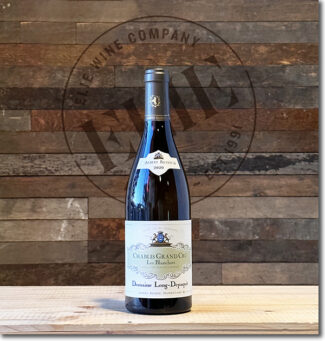 Domaine Long-Depaquit, 2020 Chablis Grand Cru Les Blanchots ($110)
Domaine Long-Depaquit, 2020 Chablis Grand Cru Les Blanchots ($110)
Blanchots provides a unique soil composition, combining typical Chablis Kimmeridgian limestone with ammonites and a layer of white clay. Blanchots takes its name from this white clay. which retains moisture and protects the vines from hydric stress.
The wine shows a floral nose dominated by lilies and white roses; the ample mouth is generous with citrus and stone fruit, leading to mineral fish with hints of flint and graphite.
Chardonnay Finds Valhalla
When the Burgundian wine trade refers to a ‘monopole’, it refers to a single defined vineyard area responsible for the production of a single label from a particular producer. La Moutonne is one such vineyard, six acres in size and lying mostly within the Vaudésir Grand Cru, but with a small protrusion into Les Preuses. Owned entirely by Domaine Long-Depaquit, itself owned by Domaines Albéric Bichot, Moutonne faces predominantly south, although with the gentle curve of the hillside, some of the vines face to the southeast. Coupled with a relatively steep gradient that increases sunlight exposure and drainage, the vineyard enjoys a warmer mesoclimate than vineyards lower down the slope.
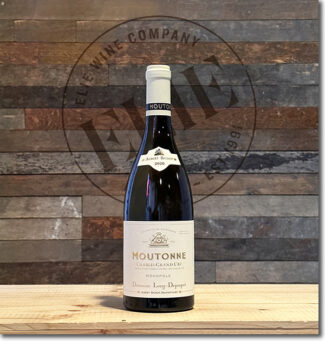 Domaine Long-Depaquit, 2020 Chablis Grand Cru Moutonne ‘Monopole’ ($229)
Domaine Long-Depaquit, 2020 Chablis Grand Cru Moutonne ‘Monopole’ ($229)
25% of this wine sees neutral oak for ten months, then final ageing in stainless steel vats for six months on fine lees. The nose is fleshy with peach and nectarine, with discreet notes of jasmine and violet. Full-bodied and generous with the distinct marly minerality that reflects the micro-terroir, the palate maintains freshness and lightness despite the complexity.
Domaine Laroche
From its headquarters at the Obédiencerie of Chablis, Laroche celebrates a heritage dating back to the Middle Ages, when the Canons of St. Martin of Tours were making wine. St. Martin’s relics were hidden in the Obédiencerie for a decade and Domaine Laroche still produces and ages its Premier and Grand Crus in these historical cellars.
At well over two hundred acres situated among the top vineyards in Chablis, the estate’s approach to maintaining terroir specificity is unique: Under the direction of Grégory Viennois, the winemaking team designate one team member to each plot who is wholly responsible for the management of that vineyard from pruning and health of the soil to the quality and quantity of fruit yields. According to Viennois, “We tend to be fatalists. If the weather and the climate are not with us, we can do very little, so we have learned to work with the weather. We have rainfall and steep slopes, and this defines our terroir and wine.”

Grégory Viennois
The heralded star in the Laroche portfolio is cuvée Reserve de L’Obédience, which draws the best fruit of the Les Blanchots Grand Cru. The pinnacle of Laroche holdings, Les Blanchots provides a unique terroir made of a layer of white clay on Kimmeridgian limestone with ammonites—an ideal admixture that maintains the optimal amount of water for deep root development. Combined with a southeast exposure, this allows for slow ripening and gradual aroma development slowly, just as the wine requires about five years to fully express itself.

Domaine Laroche Grand, Premier and Village Package: Five Bottles for $399
A cross-section of quality from the most consecrated terroirs of Chablis, this package represents a challenge of nuance: Each bottle, though 100% Chardonnay, reflects its place of origin, and learning to identify a wine from the specific spot where it is grown in one of the great achievements of wine appreciation.
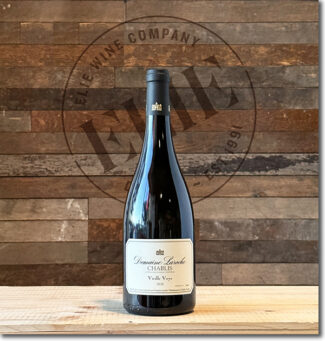 Domaine Laroche ‘Vieille Voye’, 2020 Chablis ($42)
Domaine Laroche ‘Vieille Voye’, 2020 Chablis ($42)
Vieille Voye is a Left Bank vineyard located beneath the Premier Cru site ‘Les Vaillons’ where the vines are more than seventy years old. Although it is not classified as a Premier Cru, Laroche treats Vieille Voye as though it was, hand- harvesting and sorting the grapes in the winery before extended aging in French oak foudres.
The wine’s textured nose provides fresh green-apple peel and bright, ripe lemon, adding freshness to a taut and concentrated palate with beautiful limestone depth.
 Domaine Laroche, 2020 Chablis Premier Cru Les Beauroys ($65)
Domaine Laroche, 2020 Chablis Premier Cru Les Beauroys ($65)
Les Beauroys lies on the left bank of the Serein, and produces wines that are most often described as ‘charming’. It is among the earliest vineyards in Chablis to ripen and is known for being delightfully accessible in its youth.
The wine shows a delicate nose that combines anise with candied orange peel and leads to a pithy palate driven by citrus and salinity.
 Domaine Laroche, 2020 Chablis Premier Cru Côte de Léchet ($68)
Domaine Laroche, 2020 Chablis Premier Cru Côte de Léchet ($68)
The Côte de Lechet vineyard lies just above the small village of Milly on the western side of the river. A southeasterly aspect gives it exposure to the less intense morning sun, in contrast to the more sunset-facing slopes on the other side of the valley. This encourages slower ripening in an already cool climate, and ensures that the acidity that typifies the region’s wines flourishes.
Elegant and floral with spicy undertones, the wine demonstrates a profound minerality that lingers through to the finish and adds complexity to the gentle acidity.
 Domaine Laroche, 2020 Chablis Premier Cru L’Homme Mort ($78)
Domaine Laroche, 2020 Chablis Premier Cru L’Homme Mort ($78)
L’Homme Mort is one of the most northerly Premier Crus in Chablis, located within the larger Fourchaume Premier Cru just south of the town of Maligny. Wines made in this oddly-named (The Dead Man), 17-acre climat share the softer, more rounded characters that are synonymous with Fourchaume while also possessing a distinctive zingy minerality.
The nose shows classic notes of minerals, citrus, brioche and stone fruits with a textured and balanced mouthfeel with saline tinges and bracing acidity.
 Domaine Laroche, 2020 Chablis Grand Cru Les Clos ($149)
Domaine Laroche, 2020 Chablis Grand Cru Les Clos ($149)
The superb 66-acre Les Clos vineyard is situated at the southern end of the Grand Cru slope between the similarly revered Valmur climat to the north and the perhaps less-famous, generally south-facing Blanchots site on the south side of the hill. The wines from this plot are associated with ripe stone fruit, orange peel and honey with a tendency to be more closed in their youth and famous for their long-term aging potential.
An intense lime-scented bouquet flanked by orange blossom and pressed white flowers introduces a well-balanced palate with a honeyed mouthfeel and notes of almond and spice.
The Pinnacle
Gilding the Lily 101: We know what to do when life hands us lemons, but when the vineyard hands us Grand Cru crop, the options are interesting. Technical director Grégory Viennois explains the steps involved in creating the Laroche pinnacle, ‘La Réserve de l’Obédience’:
“The grapes are hand-harvested in Grand Cru Les Blanchots and collected in small crates to go to the winery, where they are sorted. Then, each parcel is kept apart in order to do the entire winemaking process separately. Blending of the best wines from Grand Cru Les Blanchots takes place at the beginning of the summer every year—samples are taken from each vat, cask and barrel and are then tasted and selected for their delicacy and silky outlines. The aim is to express in the glass the typicity of the terroir as faithfully as possible. We try to get nearer to the perfect wine if it exists: refined, intense, mineral and capable of maturing for at least twenty years.”
 Domaine Laroche ‘La Réserve de l’Obédience’, 2020 Chablis Grand Cru Les Blanchots ($221)
Domaine Laroche ‘La Réserve de l’Obédience’, 2020 Chablis Grand Cru Les Blanchots ($221)
Regardless of vintage La Réserve de l’Obédience is a delicate and subtle wine that showcases a markedly different style in its youth than in its maturity. Up to five years, the white fruit aromas, the mineral-driven finish and the extraordinary freshness remain front and center. With a few more cellar years, the inherent richness of terroir is expressed at its best and the soft spices and acacia honey notes, still supported by the freshness, emerge to center stage.
Domaine Laroche ‘La Réserve de l’Obédience’, 2019 Chablis Grand Cru Les Blanchots ($221)
Up front, notes of elderflower, vanilla and apple aromas and flavors converge. There is gobs of mid-palate richness above vivid acidity. Within a few years, look for the emergence of exotic aromas of petrol, quinine and pear scents to precede the appealing and concentrated minerality.
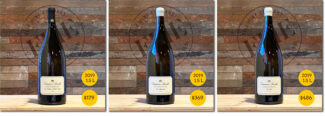
Chablis Premier Cru Les Vaillons ‘’Vieilles Vignes’ ($179)
Chablis Grand Cru Les Blanchots ($369)
Chablis Grand Cru Les Clos ($486)
- - -
Posted on 2022.12.17 in Chablis, France, Wine-Aid Packages | Read more...
In The Cradle of Malbec: Four Cahors Producers’ Wines Show Finesse and Elegance While Retaining Power (6-Bottle Pack $199)
Had ‘Steinbeck’ been ‘Malbec’, his grapes might have had less wrath. Forgive the awful pun, but within the world of Malbec, the more you take things seriously, the more perplexing the curve-ball seems to be. The mainstay of its natural home in Southwest France, Malbec found greener commercial pastures a hemisphere away in Argentina—a country that now produces ten times as much Malbec as Cahors. And in Malbec’s home field, land remains dirt cheap compared to much of French wine country; a hectare of land will go for $10,000 whereas in Burgundy, you could add a couple zeros to that figure and still come up short.
And yet, of Cahors’ 50,000 arable vineyard acres, four-fifths lie fallow.
This week’s six-bottle package highlights four remarkable producers who have helped Cahors rise above itself and a somewhat flagging reputation, which had suffered damage due to wars, frost and consumer tastes. They are vignerons who took a cue from Mendoza’s Malbec miracle and embraced a shift to consumer-friendly quality with improved viticultural practices and better cellar technique, including longer maturation and top-shelf French oak.
Climate change is also favoring modern Cahors, bringing to the limestone uplands greater vintage regularity. Marginal sites here may still produce acidic Malbec wines, even if picked into October, but the shifting tides of climate are greening up the pastures of Cahors.
The Southwest: France’s Hidden Corner
How France’s fifth-largest winegrowing region remains one of its least known (and mostly underappreciated) is another mystery. Tucked away between the Pyrenees mountains in the South, Bordeaux in the north and the Atlantic Ocean to the west, France’s ‘Hidden Corner’ has twice as many vineyards as Burgundy and boasts some of France’s most beautiful countryside with vineyards scattered across rolling fields and picturesque river valleys.

Roughly divided into four sub-regions, each area has its own personality and unique wine profile: Bergerac and Dordogne, which specializes in dry white blends, full-bodied reds and sweet dessert wines; the Pyrenees, known for rustic Tannat, the variety that dominates the area’s most renowned appellation, Madiran; Garonne and Tarn, famous more for breathtaking scenery that top shelf wine and Lot, home to the incomparable Malbec-based ‘Black Wines’ of Cahors.
Cahors: A ‘Lot’ Runs Through It
While the Colorado River was busy carving out the Grand Canyon, a similar, if slightly less dramatic geological phenomenon was happening in Southwest France, where the Lot River was at work creating the Lot Valley, where, instead of leaving behind a big hole, there are steeped terraces ideal for vine cultivation. The terroir of Cahors is loosely defined by the differing soil types and the exposures created by these terraces.
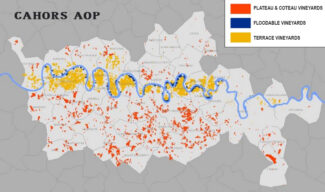
The Plateau, referred to ‘les Causses’, lies at an elevation of nearly a thousand feet; it contains the Kimmeridgian limestone also found in Chablis and parts of Champagne. In addition, this area holds layers of iron rich clays with sporadic patches of rare blue clay, lending structure and energy to the wines. Below that, the Fourth Terrace, at an average elevation of 788 feet, offers a mix of limestone scree and ancient alluvial soils from the river, creating wines with bright red fruit and rustic earthiness. The Third Terrace is closer to the river, and at an average elevation of 558 feet it is primarily composed of clay, sand and the famous ‘galets roulés’ which imbue the wines with bold, black fruit and supple tannins, adding roundness in the way that Merlot softens Cabernet Sauvignon in Bordeaux.

Cahors vs. Argentina: The Expression of the Malbec Grape
Same grape, different day. When, in the mid-nineteenth century, French agronomist Miguel Pouget was hired by the governor of Mendoza to create a training program for winemakers in Argentina, he brought along 120 French varietals. Of them, one proved to be a first among equals.
In France, Malbec tends to be a problem child as it particularly susceptible to frost and dampness. In Argentina, growing Malbec proved to be almost too easy: By 1944, when Argentina had over 250,000 acres of vines planted, half of them were Malbec. At the time, the general population of the South American country preferred quaffable table wines, and a lot of Malbec wound up as a supplement to add color and aroma to native grapes, called ‘criollas.’
As tastes evolved, so did Malbec. Today, Argentine Malbec has smaller grapes and tighter bunches than the type grown in Cahors, and the flavor profile is markedly different. It turns out that Malbec enjoys the heat, and thrives on the unique minerals in Argentine soils as well as the cooling air flowing down from the snow-capped Andes Mountains. The wines are less ‘sledgehammer’ and more plummy and fruit-forward than their French counterparts, which tend to be austere and astringent in their youth, maturing to showcase a leathery, savory bitterness often highlighted by black pepper and spice.
And as the French are fond of saying, “Vive la différence.”
Domaine Cosse et Maisonneuve
Individually, their pedigrees are impressive: Matthieu, Domaine Cosse et Maisonneuve’s winemaker, is a graduate of the Institute of Enology in Bordeaux, and Catherine, the oenologist, holds a BTS viticulture and oenology from Blanquefort. Together, Matthieu and Catherine make magic. In 1999, they took over a 12-acre estate of old Malbec vines in Prayssac, a short distance from Cahors, and set out to make wines intended to transcend the rustic image of Cahors. Their first vintage was ‘Les Laquets’ and they shortly expanded the range to include separate cuvées intended to reflect the identity of the different terroirs of the estate.
Says Catherine: “Wine is the ambassador of a terroir and a winemaker is the interpreter. Thus, to obtain perfect grapes that will clearly express the qualities of the Cahors terroir, everything in the vineyard must be natural.”
As such, they are certified organic by Ecocert and farm their vineyards biodynamically with a plan to become Demeter certified as well. Everything done in the vineyard aims at building of balanced soils to produce optimal conditions for ripening the grapes and making harmonious, aromatically complex and precise wines. Today, Domaine Cosse et Maisonneuve totals 42 acres planted predominantly to Malbec, with small amounts of Merlot and Tannat. All plots are situated in primary locations on the gravel and clay Third Terrace above the Lot River.
 Domaine Cosse et Maisonneuve ‘Les Laquets’, 2019 Cahors ($48)
Domaine Cosse et Maisonneuve ‘Les Laquets’, 2019 Cahors ($48)
A perfect representation of the Cosse et Maisonneuve style—elegant, complex and biodynamic, from vines that are over fifty years old. The palate is dense yet sleek, with notes of blackberry, fennel and iris. 2019 was an extraordinary vintage with superb aging potential.
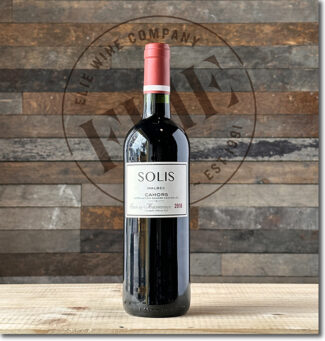 Domaine Cosse et Maisonneuve ‘Solis’, 2018 Cahors ($16)
Domaine Cosse et Maisonneuve ‘Solis’, 2018 Cahors ($16)
Cosse et Maisonneuve puts a new twist on the old school wines of Cahors, relishing in a style that is precise and elegant, smooth and aerial. Produced from a 25-acre plot in the commune of Mauroux from the ‘lightest’ section of the terrace dominated with gravel and alluvials, it was de-stemmed and vinified in vats to preserve its velvety character. It shows pure varietal aromas and flavors of blueberry and violet behind silky tannins, with hints of herbs in the finish. An exceptionally high-quality wine for the price, from some of the most meticulously farmed vineyards in the region.
Château du Cèdre
Founded in the 1950s by Belgian immigrant Léon Verhaeghe, the third-generation brothers Pascal and Jean-Marc now helm Château du Cèdre. Pascal trained in viticulture and winemaking at Jean-Marie Guffens and did a stint in Napa Valley, while Jean-Marc is a graduate of La Tour Blanche in Sauternes. Seeing the opportunity to bring synergy to the estate, Jean-Marc makes cultivating the vines his specialty while Pascal devotes himself to making, maturing, and marketing the wine. Over the past fifteen years, they have transformed the reputation of Château du Cèdre to near the top of the Cahors appellation.
Today, they are still pioneering, supported by an excellent team that includes Pascal’s sons Jules and Robin. The estate is situated in the village Vire-sur-Lot village; its vineyards cover the slopes of Bru, and these 60 acres reflect two distinct terroirs; the clay-limestone of Le Tran and the blend of red sands on a subsoil of shingles and silt. The vineyard is worked by hand and by machine but without chemical herbicide and fertilizer and each of the plot expresses the unique potential of Cahors Malbec.
 Château du Cèdre ‘Le Cèdre’, 2016 Cahors ($61)
Château du Cèdre ‘Le Cèdre’, 2016 Cahors ($61)
90% Malbec, 5% Merlot, 5% Tannat from organically grown grapes, this stunning Cahors is packed with lusciously ripe black fruits woven between bitter cocoa and tobacco. A beautifully structured wine with a persistent finish that accentuates the integrated tannins.
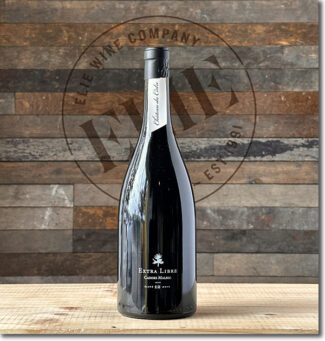 Château du Cèdre ‘Extra Libre’, 2019 Cahors – Natural ($33)
Château du Cèdre ‘Extra Libre’, 2019 Cahors – Natural ($33)
‘Extra Libre’ is a crimson blend of 97% Malbec and 3% Merlot, and extra-liberated it is: There are no added sulfites and no oak employed and the vineyards are organic. Big and bold with scents of sloe, blackberries and earthy spices. On the palate, it is smooth and rich with balanced tannins and a juicy acidity that leads to a lingering finish.
Château Ponzac
The Molinié family has been living in the village of Carnac-Rouffiac since the 14th century and as such, is inextricably linked to the local vineyards and winemaking traditions. So when (in 1998) Matthieu Molinié took over the estate with a freshly-earned degree in viticulture and oenology, it was yet another link in a daisy-chain of Cahors wine talent. His partner Virginie obtained the same diploma and joined him two years later.
The seventy-acre property is equidistant from the Atlantic and the Mediterranean and enjoys the best of this dual climate; oceanic until June, then becoming Mediterranean in July, allowing for diurnal shifts that guarantee the ideal balance between acidity and phenolic maturity. The estate grows both Malbec and Merlot, each capable of reflecting the region’s marly-limestone soil and reddish ferruginous clay. The couple is also assisted in fine-tuning the final cuvée by Pascal Verhaeghe of Château du Cèdre.
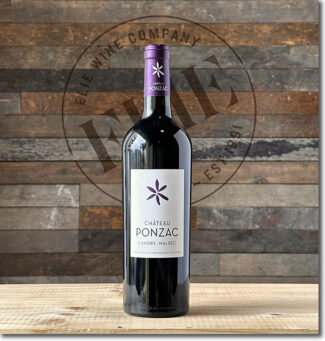 Château Ponzac, 2018 Cahors ($19)
Château Ponzac, 2018 Cahors ($19)
100% Malbec grown on the chalky plateau of Carnac. The nose shows notes of fresh blackberries with candied fruits and spices. The massive tannic frame is girded by a mineral twang and some herbal notes. Densely textured and velvety, the wine shows savory tension all the way to the finish.
Clos Troteligotte
Clos Troteligotte roughly translates to “Land of the Doves,” and it is true symbolically as well as being a nod to local fauna. The wines from this spectacular ten-acre estate are a peace offering of sorts, uniting the old Cahors style with the new.
Emmanuel Rybinski is considered among the most forward-thinking vignerons in the appellation and his vineyards sit at strikingly high elevations—above the fog line, so that he manages to leapfrog the mildew that may decimate valley vines. Not only that, but he takes advantage of a terroir so rich in iron that the chunks scattered across his acres could be sold to a smelter. Rybinski lives a natural lifestyle, and is a man ‘of the vines and for the vines.’ Rows are plowed by horse and spaced tightly. In 2005, the operation was classified under ‘rational agriculture’ which corresponds to a holistic approach in the management of farms, and in January 2014, Clos Troteligotte became certified organic.
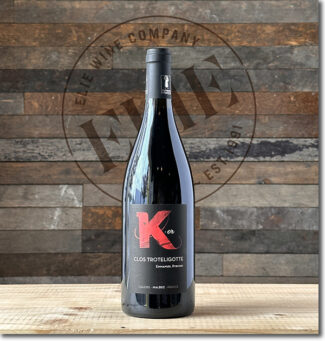 Clos Troteligotte ‘K-or’, 2018 Cahors – Natural ($23)
Clos Troteligotte ‘K-or’, 2018 Cahors – Natural ($23)
The wine first sees cold Maceration between 50 and 54 ° F for 5 days with no yeasts or enzymes followed by full body pigeage for 10 days, then a 30-day maceration period before being aged for 18 months in concrete vessels. The name references the regional word ‘knom’ to describe the best wine in the house; Emmanuel paints the K on the label bright red because he cherishes the blood-aroma he thinks this wine gives off upon opening.
We pick up more dusty black currant with briary raspberry notes throughout. Eminently quaffable, the acids are soft, enhancing K-nom’s drinkability. 15% Merlot, there is a faint saline undertone for which style is known.
NEW ARRIVAL
France’s Other Hidden Corner: Catalunya Nord
Ceded to France by the Treaty of the Pyrenees, Northern Catalonia—Catalunya Nord—is also known as ‘Pays Catalans’, but most of us are more familiar with the name ‘Roussillon.’ Often joined at the hip to the region of Languedoc, the area seems small on a map, yet one in every three appellation-designated French wines are produced here. Languedoc and Roussillon’s reputations have significantly improved in recent years—new talent attracted to lower land prices has helped fuel the area’s revival. Caryl Panman, co-owner and -manager of Château Rives-Blanques calls this new influx of innovative winemakers ‘neo-vignerons’, saying, “It is an El Dorado of wine, and some, some local growers are thinking big, leaving behind cooperatives and négociants to bottle their own wines.”

Emmanuel Cazes, wine ambassador at Maison Cazes in Rivesaltes, echoes the sentiment, calling Roussillon the ‘land of new opportunities.’ Once a major producer of sweet wines and high-crop, carbonic-macerated Carignan, Roussillon suffered a decline in sales in the 1990s, forcing producers to reflect and innovate. “We have several assets to help us move into premium wines: low crop, old vines, a hot and dry climate, terroir diversity,” says Cazes. “It was just a matter of finding inspiration and energy with a new generation of producers.”
Vin Doux Naturel: Hedonistic Semi-Sweet Wine, Naturally
Roussillon forms an amphitheater facing the sea, surrounded by three massifs and subdivided by three rivers. As a result, its terroir varies wildly, and to reflect this, the region houses 14 AOPs as well as two IGPs. 24 grape varieties are permitted.
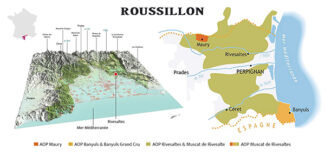
Much of the appellation system reflects Roussillon’s history of sweet wines and today, Roussillon makes 80% of France’s Vins Doux Naturels (VDNs). These fortified sweet wines retain their natural sugars after fermentation is stopped by the addition of a spirit.
A noble history? In 1285, Arnau de Vilanova—a director of the University of Montpellier and doctor at the court of Majorca—discovered ‘mutage’, the basis of this unique style of wine. Similar to Port, VDNs are fortified with a neutral grape spirit to stop the yeast before fermentation is complete and all sugars have been converted into alcohol. The wines retain naturally occurring sugar that translates to sweetness on the palate. The final alcohol level varies depending on the regulations of the AOP, although most have a minimum required content of 15% alcohol-by-volume.
Amber Treasure
1974 Rivesaltes Ambré (Vignobles Terrassous)
Rivesaltes may not roll off the tongue (even of French wine enthusiasts) but it is the largest appellation for Vins Doux Naturels. Covering 68 villages of the Pyrénées-Orientales and nine of the Aude, three rivers—the Agly, the Têt and the Tech—criss-cross the land, creating hills and tiered terraces that span a range of soil types. Grenache Blanc, Grenache Gris, Grenache Noir and Macabeu are the main varieties used in production of Rivesaltes VDNs, although Malvoisie can also be included. Rivesaltes Ambré can also incorporate Muscat, but the variety must not represent more than 20% of the blend.
Vignobles Terrassous is, quite simply, massive: It is a co-op comprised of 70 grower members who collectively farm nearly two thousand acres, some at elevations of a thousand feet. Based in the Aspres Hills, Terrassous terroir has cool nights and is subject to the fierce winds of a dry Mediterranean climate (Aspres means arid). Rocky, red clay, limestone and schist are the diverse soils making up Aspres.
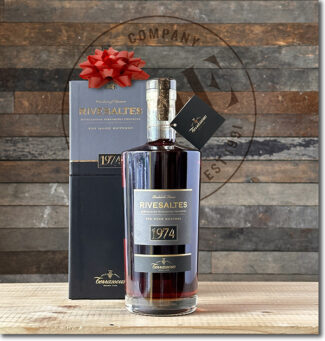 Vignobles Terrassous, 1974 Rivesaltes Ambré ($149)
Vignobles Terrassous, 1974 Rivesaltes Ambré ($149)
Beautifully-aged, 1974 Rivesaltes Ambré shows the sort of maturity that only Vin Doux Naturel displays; primarily made with Grenache Noir, Grenache Blanc, Grenache Gris, Macabeu and Tourbat. This type of Vin Doux Naturel requires a minimum of two and a half years of oxidative aging, during which it gradually changes from a deep-golden yellow color which turns to orange; with additional age, it changes from amber and eventually to reddish-brown. Vintage 1974 is at its peak, showing fabulous aromas of sweet wood spice, fig, cigar and toffee.

- - -
Posted on 2022.12.09 in Cahors, France, Wine-Aid Packages | Read more...
The Champagne Society December 2022 Selection: Champagne Fleury
Champagne Fleury ‘Notes Blanches’
2015 Côte des Bar Brut Nature
Special Price for members of the Champagne Society is $97.
The Season of Sparkles is upon us, and as has become our holiday tradition at Elie’s, this year we will showcase the wines of a favorite grower/producer. Jean-Sébastien Fleury of Champagne Fleury is an innovative young winemaker who uses the subtle alchemy of art and technique to highlight the unique terroirs in Champagne’s up-and-coming ‘Deep South’, the Côte des Bar.
In addition to pioneering ‘vines-to-wines’ biodynamics, Domaine Fleury has shaped a rigorous blending process that creates synergies from different grape varieties (some heirloom) and 40 plots in some of the lesser known terroirs of Champagne. Along with his brother Benoît and sister Morgane, Jean-Sébastien is rising to the challenges of a changing climate and an evolving market by breathing new life into old traditions.
South Rising: Aube’s Côte des Bar
There is a certain ignominy in being Aube. Ninety miles south of Épernay, there have been times when its very inclusion in the Champagne appellation has been cast into doubt: In 1908, for example, Champagne Viticole was defined as 37,000 acres in the Marne and the Aisne, with the Aube département excluded. The effervescent French do not take such face-slaps lightly, and after a series of riots, a new legal delimitation of Champagne was drawn in 1927, delineating its modern boundaries—85,000 acres that this time included the Aube and its most heralded subzone, the Côte des Bar.
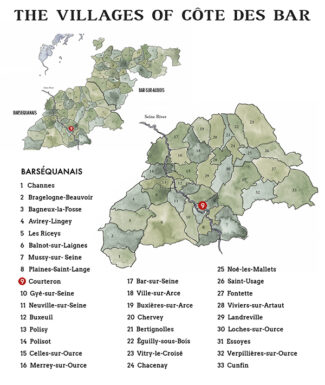
Even so, the échelles des crus ranking offered none of Aube’s villages the prestige of Grand Cru or Premier Cru ranking. This didn’t help in removing the stigma of being Champagne’s Pluto, and it has only been fairly recently that progressive—even iconoclastic winemakers— have thrust the region into the spotlight. Today, the Côte des Bar makes up 23% of Champagne’s output, and the past 20 years have seen its vineyard surface grow by more than three thousand acres.
Champagne Fleury
“Let Nature and Its Rhythms Express Themselves.”
If any estate is anchored to the Côte des Bar it is Champagne Fleury, whose Courteron vineyards span 38 acres on a clay-limestone hillside along a tributary of the Seine. But, as the first Champagne house to convert to biodynamics (1989), Jean-Pierre Fleury proved that a producer can have roots in the earth while raising the mainsail to innovation.
Today, his son Jean-Sébastien Fleury has taken the winemaking rudder, and is tacking toward the future with respect for the unique situation of the Côte des Bar, which is closer to Chablis than to Reims. “The key is soil health,” he says. “We must keep the earth healthy. The structure of the soil gives back the essence of the terroir.”

In this endeavor, he is joined by his younger brother Benoît, who came on board in 2010 to manage the vineyards, intent not only on maintaining biodynamics, but also researching soil biology, biodiversity and experimenting with agro-forestry. A third sibling, Morgane, initially studied to be an actress and a sommelier in Suze-la-Rousse, runs ‘My Cave Fleury’ in Les Halles (made famous by Émile Zola’s famous novel of the same name) where she specializes in biodynamic wines.
The estate encompasses ten plots planted primarily to Pinot Noir, the oldest planted in 1970, and new cuttings are established every year to maintain the vitality that younger vines bring to Champagne. The ultimate goal, according to Jean-Sébastien is a wish “to let the nature and its rhythms express themselves.”
Appreciate the Balance and Share the Mysteries of Nature
The Japanese have long espoused a mystical connection between the earth and sky; a spectacle of nature and the subtle balance that prevails between tradition and modernity. That is a philosophy that winemaker Jean-Sébastien Fleury grew up with. His father, Jean-Pierre, who originally wanted to be an astronomer, embraced the concept that every human on earth has a small but essential role in maintaining the harmony of the universe, and fell in love with cultures founded on principles of equity, between people and with the land, and decided early to raise his family in physical and spiritual health.
Champagne is especially suited to this thought process; at its core, it is an attempt to find a nearly magical equilibrium between nature and man’s ability to enhance it. An understanding of the microcosm and the macrocosm is essential to a biodynamic vision, and as an homage to the interdependence of earth and sky, Fleury vineyard practices seemed—in the last century—as almost druidic, although they are now being embraced throughout France.
Enhancing and Understanding Terroir’s Character
Reims lies at Latitude 49°5, and Épernay at 49°; in the northern hemisphere, it is generally considered difficult to obtain quality grapes at the 50th parallel and above. The ninety mile cushion enjoyed by Côte des Bar has a pronounced effect on the grower’s ability to ripen Pinot Noir; as a result, 86% of the vineyards are planted to this varietal. Despite this, the soils of the Côte des Bar is closer to that of Chablis—Kimmeridgian marl topped by Portlandian limestone, whereas the vines near Épernay and Reims tend to be planted in Cretaceous chalk. Chablis, of course, is ground zero for Chardonnay, and it is humidity coming from the Atlantic in the west as well as continental influences with higher temperatures that make the Côte des Bar Pinot Noir country through and through. That said, local climate conditions, slope and orientation are extremely varied throughout region, and produces many individual micro-climates, so each vigneron needs to be fully attentive to his own terroir in order to make the most of it. Côte des Bar features a host of small producers whose output varies almost as much as the local landscape.

The Biodynamic Principles: Respecting Earth’s Life Forces
The Fleury family looks at the estate as a living organism and pampers it as one might a beloved family pet. “We have been cultivating our land in line with its habitat for more than thirty years, acknowledging nature’s rhythms and the influence of terrestrial and cosmic forces. At first, this agricultural principle may seem demanding and esoteric, but it is truly a virtuous circle. We envision wine as a support of nature’s creation that undeniably enhances the product we bottle. All wines are labeled ‘Organic Agriculture TM’ and ‘Biodynamic.’”
Fleury delves deeper: “A vineyard is a monoculture, so our work is directed toward increasing biodiversity. Our viticultural work is focused on both the soil and the plant. Cultivation is done by hand in addition to the application of biodynamic preparations. Vine work is synchronized with planetary and lunar cycles; this is based on the effects these heavenly bodies have on root, leaf, flower and fruit development. For example, vine suckering, de-leafing and de-budding is done on ‘leaf day’ in the lunar calendar. The grafts and harvest is done in accordance with the lunar spring, when the moon is rising, a time that favors heavy sap flow. The lunar fall, when the moon is descending, is the best time for pruning.”
Vinification at the Winery: Producing Earth’s Best
“Our slow aging process is a symbolic return to the earth,” says Jean-Sébastien Fleury, referencing the biodynamic methods that result in wines with an improved balance between sweetness and acidity compared to other wines. “In our Domain, these characteristics allow us to leave the bottles to age in our cellar for a longer time of 3 to 5 years for the Blanc de Noirs, Fleur de l’Europe and Rosé, and 6 to 10 years for the Millésimes. This slow aging process that is an essential step before revealing the wine during the tasting. Aging before beginning a new life symbolizes another cycle of nature and of the cosmos.”
Champagne’s Three Primary Grapes
The vast majority of Champagne is made from one or more of the Big Three, chosen in late 19th century as grape varieties that offer the best balance of sugar and acidity to complement the effervescence. First, Pinot Noir, which dominates the holdings in the Côte des Bar, where it is sometimes called Précoce, as it ripens early. When allowed to thrive in cool, chalky soil, Pinot Noir endows Champagne with body, punch and structure. Chardonnay is also an early ripening variety, particularly well-suited to terroirs which lie on an outcrop of chalk, and yields delicately fragrant wines with floral, citrus and mineral notes and produces wines that age well. The trio is rounded out by Meunier, a hardy grape that is compatible with soils containing more clay, such as in the Marne Valley, where it is frequently considered an insurance grape against poor vintages since it buds later and is more accepting of cooler mesoclimates.
In Pinot Noir Country: Taking Cues from Burgundy
So obsessed was the Aube on becoming part of Champagne that they fought back; 40,000 French soldiers were required to quell the violence. Still, like a child who denies his roots, the flavors of Burgundy can be tasted in most aspect of the region—traditions, architecture, cuisine and winemaking.
Most growers in Aube’s vineyard acres trained in Burgundy, and the luxurious Champagnes the region is capable of carry both the precision and minerality of Kimmeridgian limestone—often so close to the surface that no soil is evident and the vines appear to be planted in lunar bedrock—which is the identical foundation for the Grand and Premier Crus of Chablis. Puligny-Montrachet barrels are often used in cellars and biodynamics—much more prevalent in Burgundy than in Champagne—are becoming increasing indispensable to young winemakers in the Côte des Bar. It is, in part, this tension—the tug of war between Champagne and Burgundy—that creates the marvelous electricity of Côte des Bar wines.
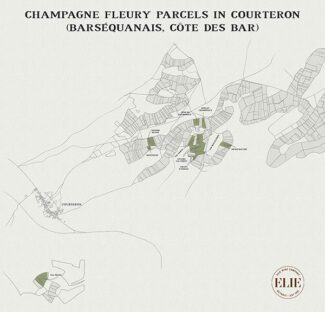
“Planet Pinot Noir”
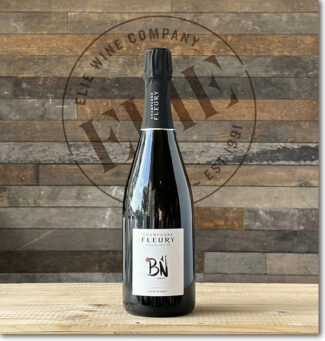 Champagne Fleury ‘Blanc de Noirs’, Côte des Bar Brut ($54)
Champagne Fleury ‘Blanc de Noirs’, Côte des Bar Brut ($54)
Fleury’s 100% Pinot Noir Champagne is a blend of 75% vintage 2017 with reserve wine from the Fleury ‘solera’, wherein each new vintage is added to the wooden casks to create a perpetual reserve. This cuvée then ages four years on sur lattes. The wine receives a dosage of 4.9 grams per liter.
Elegant, bone dry and fresh, it offers up classic notes of white peach and iris.
*click on image for more info
“Notes of Twilight”
 Champagne Fleury ‘Boléro’, 2008 Côte des Bar Extra-Brut ($130)
Champagne Fleury ‘Boléro’, 2008 Côte des Bar Extra-Brut ($130)
Once called ‘Millésimé’, this vintage Champagne originally contained Chardonnay; in 2004, the decision was to change both the name and the content—it is now 100% Pinot Noir made from 25-year-old vines and receives no dosage.
The brainchild of Benoît Fleury, ‘Boléro’ is drawn from four plots—Charme de Fin, Champraux, Meam Bauché and Montégné. It exhibits complex scents of toasted almond, apricot and freshly-baked bread followed by a lengthy, mineral-driven finish.
*click on image for more info
“When Mars and Venus Meet”
 Champagne Fleury ‘Rosé de Saignée’, Côte des Bar Brut ($74)
Champagne Fleury ‘Rosé de Saignée’, Côte des Bar Brut ($74)
The grapes see a short period of maceration before pressing. This method of production is the saignée, or bleeding, that produces a light, lyrical sparkling wine whose dosage has been gradually reduced over the years; it now stands at 2 grams per liter. The wine is 100% Pinot Noir from the 2017 harvest, from vines with an average age of 30 years.
The wine is redolent of strawberry compote and vanilla, with a rich palate that maintains both elegance and delicacy.
*click on image for more info
“The Sun and the Moon on a Date”
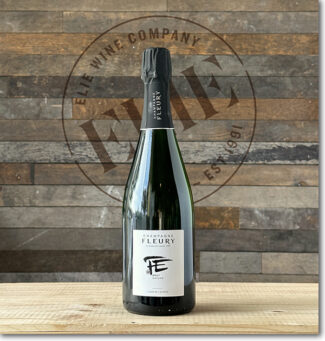 Champagne Fleury ‘Fleur de l’Europe’, Côte des Bar Brut Nature ($59)
Champagne Fleury ‘Fleur de l’Europe’, Côte des Bar Brut Nature ($59)
The first biodynamic cuvée in Champagne, the name references the Europe that witnessed the fall of the Berlin Wall. The wine is made from 85% Pinot Noir, 15% Chardonnay; 58% is vintage 2015, the rest a blend from the solera casks. Dosage is zero.
The wine displays silken notes of green apple and peach with warm brioche on the nose and persistent pinpoint bubbles throughout the palate.
*click on image for more info
“Cosmic Symphony”
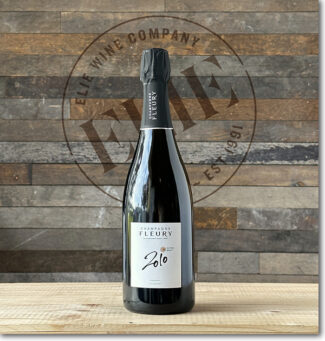 Champagne Fleury ‘Millésime’, 2010 Côte des Bar Extra Brut ($110)
Champagne Fleury ‘Millésime’, 2010 Côte des Bar Extra Brut ($110)
Using a traditional Coquard press and drawing fruit from vines over 30 years old, this blend of 80% Pinot Noir and 20% Chardonnay is vinified 60% in stainless steel and 40% in oak barrels. 4 grams per liter of residual sugar is allowed.
The wine has a honey-nut nose and rich, spicy palate with hints of smoke behind citrus/apple flavors
*click on image for more info
“Little Music of Time and Space”
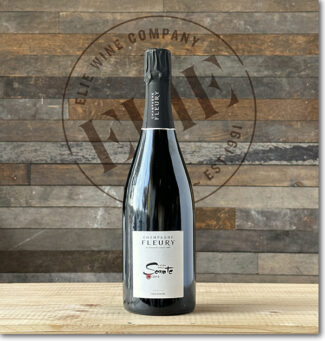 Champagne Fleury ‘Sonate’, 2012 Côte des Bar Extra-Brut ‘Natural’ ($99)
Champagne Fleury ‘Sonate’, 2012 Côte des Bar Extra-Brut ‘Natural’ ($99)
A rather classic blend of 78% Pinot Noir and 22% Chardonnay, ‘Sonate’ is the fourth edition of sulfite-free wine. From plots in Champraux, Valprune and Charme de Fin, the vines average 35 years of age and dosage is zero.
The wine is loaded with aromatic richness, opening with aromas of acacia, daffodil and citrus peel behind ripe peach and a characteristic note of quince jelly.
*click on image for more info
“Rainbow White”
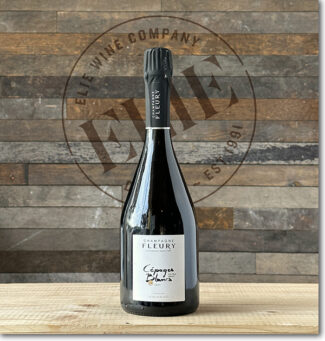 Champagne Fleury ‘Cépages Blancs’, 2011 Côte des Bar Extra-Brut ($110)
Champagne Fleury ‘Cépages Blancs’, 2011 Côte des Bar Extra-Brut ($110)
100% Chardonnay, the vineyards blended to make this wine are planted in Kimmeridgian limestone in the lieux-dits of Champraux and Valprune old vines. The wine is made from the 2011 vintage and has 2 grams per liter residual sugar.
Displaying superb dried fruits aromas with licorice and praline, the wine is redolent of almonds, peach and white flowers
*click on image for more info
Heirloom Varieties
In terms of climate and attitude, no place in Champagne is more hospitable to heirloom grapes that the Côte des Bar; overall, more than 250 acres of vineyard is dedicated to Pinot Blanc (locally called Blanc Vrai), Pinot Gris (Fromenteau), Arbane and Petit Meslier.
“Return From Eclipse”
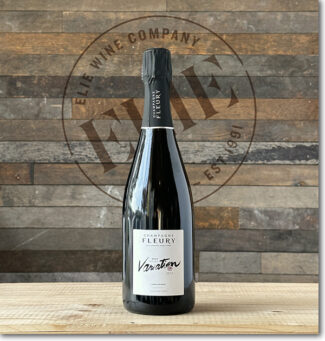 Champagne Fleury ‘Variation’, 2015 Côte des Bar Brut Nature ‘Natural’ ($130)
Champagne Fleury ‘Variation’, 2015 Côte des Bar Brut Nature ‘Natural’ ($130)
Planted in 2010, harvested in 2015, this wine is made without sulfites and after five years aging, receives zero dosage. It is the second release of this unique biodynamic Pinot Gris. The mouth is rich and alive with a bright mousse, shows apple notes, bright stone fruit, soft spice and salinity.
*click on image for more info
The Champagne Society: December 2022 Selection
“Memory of a Star”
 Champagne Fleury ‘Notes Blanches’, 2015 Côte des Bar Brut Nature (Sold Out)
Champagne Fleury ‘Notes Blanches’, 2015 Côte des Bar Brut Nature (Sold Out)
Emile Fleury, who founded the domain, was a champion of Pinot Blanc—a well-known varietal in Alsace and a hidden gem in Champagne. Morgane Fleury’s vision of creating a monovarietal cuvée using 100% Pinot Blanc is a rare and expressive experience.
Made from 25-year-old vines, ‘Notes Blanches’ is from the 2015 vintage; it shows creamy lemon and toasted bread on the nose. The palate is filled with tension and elegance, with a fine mousse and mineral finish.
*click on image for more info
VINTAGE JOURNAL
Single Harvest
In France, under Appellation d’Origine Contrôlée (AOC) rules, vintage Champagnes must be aged for three years—more than twice the required aging time for NV Champagne. The additional years on the yeast is said to add complexity and texture to the finished wine, and the price commanded by Vintage Champagne may in part be accounted for by the cellar space the wine takes up while aging.
On the other hand, a Champagne maker might prefer to release wine from a single vintage without the aging requirement; the freshness inherent in non-vintage Champagnes is one of its effervescent highlights. In this case, the wine label may announce the year, but the Champagne itself is referred to as ‘Single Harvest’ rather than ‘Vintage’.
2015
A wet winter and mild spring gave way to an exceptionally dry summer from mid-May onwards, and hot weather prevailed until mid-August, when heavy rains fell. Rains gave way to fine, cool, yet sunny weather for the first two weeks of harvest, which began on August 29th.
2012
Like 2008, 2012 was a difficult growing season, with severe frosts in the winter. March brought warmth but early bud break made the vines vulnerable. Overall, the early growing season was wet, with mildew a serious issue, however, conditions improved dramatically in the summer months. An August heatwave resulted in a rapid accumulation of sugar, but the nights remained cool, which preserved acidity. Although yields were low due to the early frost, later hail and disease pressures, the 2012 harvest was exemplary in its maturity, acidity and grape health.
2011
Following a warm, early spring and a cool, damp summer season, 2011 was one of the earliest Champagne harvests in history. Patience and fierce selection at harvest time turned out to be the winning recipe.
2010
Dry conditions hindered grape development early in the season, and after a hot summer, torrential rain in mid-August caused widespread disease pressure. The ripeness of the grapes was good and the acidity remained high despite the warm season, but as a combined consequence of the challenges of the growing season, the global financial crisis and the cellars bursting with fine 2008 and 2009 vintage bottles, few houses declared 2010 a vintage. The ones who did, did so so for a reason.
2008
Initially a difficult, damp year with widespread mildew, expectations for 2008 were low. However, drier conditions in August and a fine, warm September with cool nighttime temperatures proved to be the saving grace. Harvest began on September 15th and it quickly became known as an outstanding year, due to the finesse brought about by the fine, saline freshness and purity of fruit. A dream-come true vintage in many aspects, 2008
Notebook …
Drawing the Boundaries of the Champagne Region
To be Champagne is to be an aristocrat. Your origins may be humble and your feet may be in the dirt; your hands are scarred from pruning and your back aches from moving barrels. But your head is always in the stars.
As such, the struggle to preserve its identity has been at the heart of Champagne’s self-confidence. Although the Champagne controlled designation of origin (AOC) wasn’t recognized until 1936, defense of the designation by its producers goes back much further. Since the first bubble burst in the first glass of sparkling wine in Hautvillers Abbey, producers in Champagne have maintained that their terroirs are unique to the region and any other wine that bears the name is a pretender to their effervescent throne.
The INAO defines the concept like this: “An AOP area is born of an alliance between the natural environment and human ingenuity. From that alliance comes an AOP product with unique, inimitable characteristics, a product so different that it complements rather than competes with other products, possessing a particular identity that adds further value.”
In 1927, the viticultural boundaries of Champagne were legally defined and split into five wine-producing districts: The Aube, Côte des Blancs, Côte de Sézanne, Montagne de Reims, and Vallée de la Marne. The CIVC (Comité Interprofessionnel du vin de Champagne), formed in 1941, decreed that everyone who wanted to plant vines and grow grapes to be used in the creation of Champagne had to be registered, and if you didn’t register back then, there is no out, even now. Originally, grape growing was not a profitable business and was an afterthought meant to utilize chalky slopes where grain would not grow. As a result, many farmers at that time did not register, and today, a tour along the Route Touristique de Champagne, you’ll come across unregistered fields that lie fallow between two registered vineyards.
…Yet another reason why this tiny slice of northern France, a mere 132 square miles, remains both elite and precious.
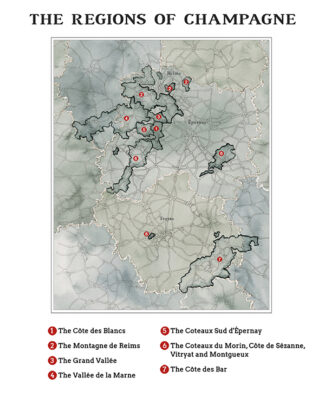
- - -
Posted on 2022.12.01 in France, The Champagne Society, Champagne | Read more...
Featured Wines
- Notebook: A’Boudt Town
- Saturday Sips Wines
- Saturday Sips Review Club
- The Champagne Society
- Wine-Aid Packages
Wine Regions
Grape Varieties
Aglianico, Albarino, Albarín Tinto, Albillo, Alicante Bouschet, Aligote, Altesse, Arbanne, Arcos, Auxerrois, Barbarossa, Beaune, Biancu Gentile, Bonarda, bourboulenc, Cabernet Sauvignon, Caladoc, Calvi, Carignan, Chablis, Chenin Blanc, Cinsault, Clairette, Cortese, Corvinone, Cot, Counoise, Dolcetto, Fiano, folle Blanche, Frappato, Fumin, Gamay, Garganega, Garnacha Tintorera, Godello, Graciano, Grenache, Grenache Blanc, Grolleau, Groppello, Jacquère, Juan Garcia, Lladoner Pelut, Macabeo, Maconnais, Malbec, Malvasia, Malvasia Nera, manseng, Marcelan, Marselan, Marzemino, Melon de Bourgogne, Mencía, Merlot, Montepulciano, Montònega, Mourv, Mourvèdre, Muscadelle, Muscat, Natural, Nebbiolo, Nero d'Avola, Niellucciu, Palomino, Patrimonio, Pecorino, Pedro Ximénez, Persan, Pineau d'Aunis, Pinot Auxerrois, Pinot Gris, Pinot Meunier, Pouilly Fuisse, Pouilly Loche, Poulsard, Riesling, Rose, Rousanne, Sagrantino, Sangiovese, Sauvignon, Sciacarellu, Serine, Souson, Sumoll, Tempranillo, Teroldego, Timorasso, Trebbiano Valtenesi, Treixadura, trepat, Trousseau, Ugni Blanc, Vermentino, Viognier, Viura, Xarel-loWines & Events by Date
- September 2025
- August 2025
- July 2025
- June 2025
- May 2025
- April 2025
- March 2025
- February 2025
- January 2025
- December 2024
- November 2024
- October 2024
- September 2024
- August 2024
- July 2024
- June 2024
- May 2024
- April 2024
- March 2024
- February 2024
- January 2024
- December 2023
- November 2023
- October 2023
- September 2023
- August 2023
- July 2023
- June 2023
- May 2023
- April 2023
- March 2023
- February 2023
- January 2023
- December 2022
- November 2022
- October 2022
- September 2022
- August 2022
- July 2022
- June 2022
- May 2022
- April 2022
- March 2022
- February 2022
- January 2022
- December 2021
- November 2021
- October 2021
- September 2021
- August 2021
- July 2021
- June 2021
- May 2021
- April 2021
- March 2021
- February 2021
- January 2021
- December 2020
- November 2020
- October 2020
- September 2020
- August 2020
- July 2020
- June 2020
- May 2020
- April 2020
- March 2020
- February 2020
- January 2020
- December 2019
- November 2019
- October 2019
- September 2019
- August 2019
- July 2019
- June 2019
- May 2019
- April 2019
- March 2019
- February 2019
- January 2019
- December 2018
- November 2018
- October 2018
- September 2018
- August 2018
- July 2018
- June 2018
- May 2018
- April 2018
- March 2018
- February 2018
- January 2018
- December 2017
- November 2017
- October 2017
- September 2017
- August 2017
- July 2017
- June 2017
- May 2017
- April 2017
- March 2017
- February 2017
- January 2017
- December 2016
- November 2016
- October 2016
- September 2016
- August 2016
- July 2016
- June 2016
- May 2016
- April 2016
- March 2016
- February 2016
- January 2016
- December 2015
- November 2015
- October 2015
- September 2015
- August 2015
- July 2015
- June 2015
- May 2015
- April 2015
- March 2015
- February 2015
- January 2015
- December 2014
- November 2014
- October 2014
- September 2014
- August 2014
- July 2014
- June 2014
- April 2014
- March 2014
- February 2014
- January 2014
- December 2013
- November 2013
- October 2013
- September 2013
- August 2013
- July 2013
- June 2013
- May 2013
- April 2013
- March 2013
- February 2013
- January 2013
- December 2012
- November 2012
- October 2012

